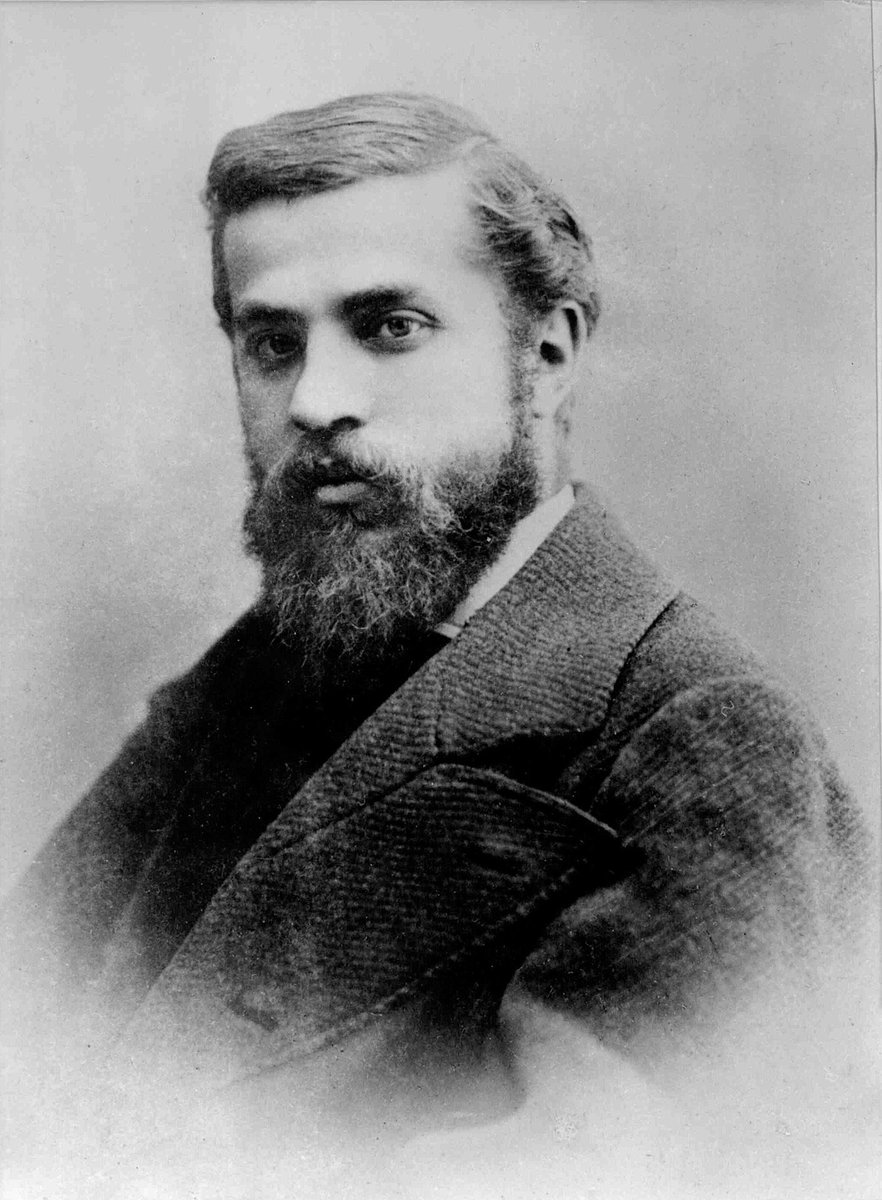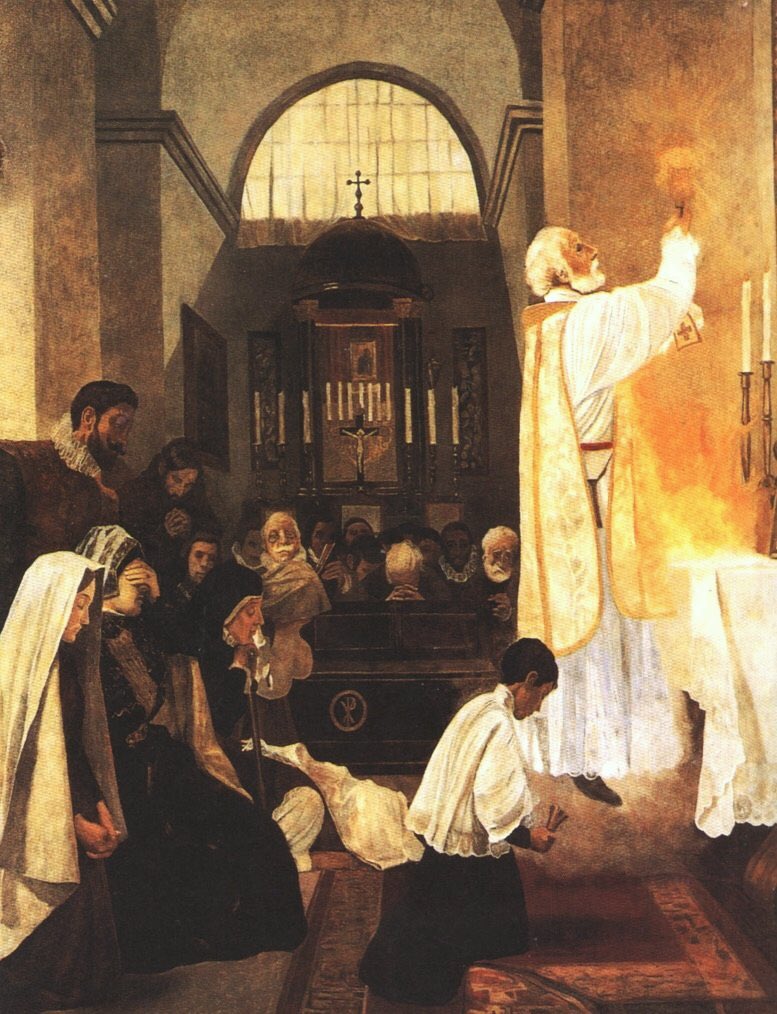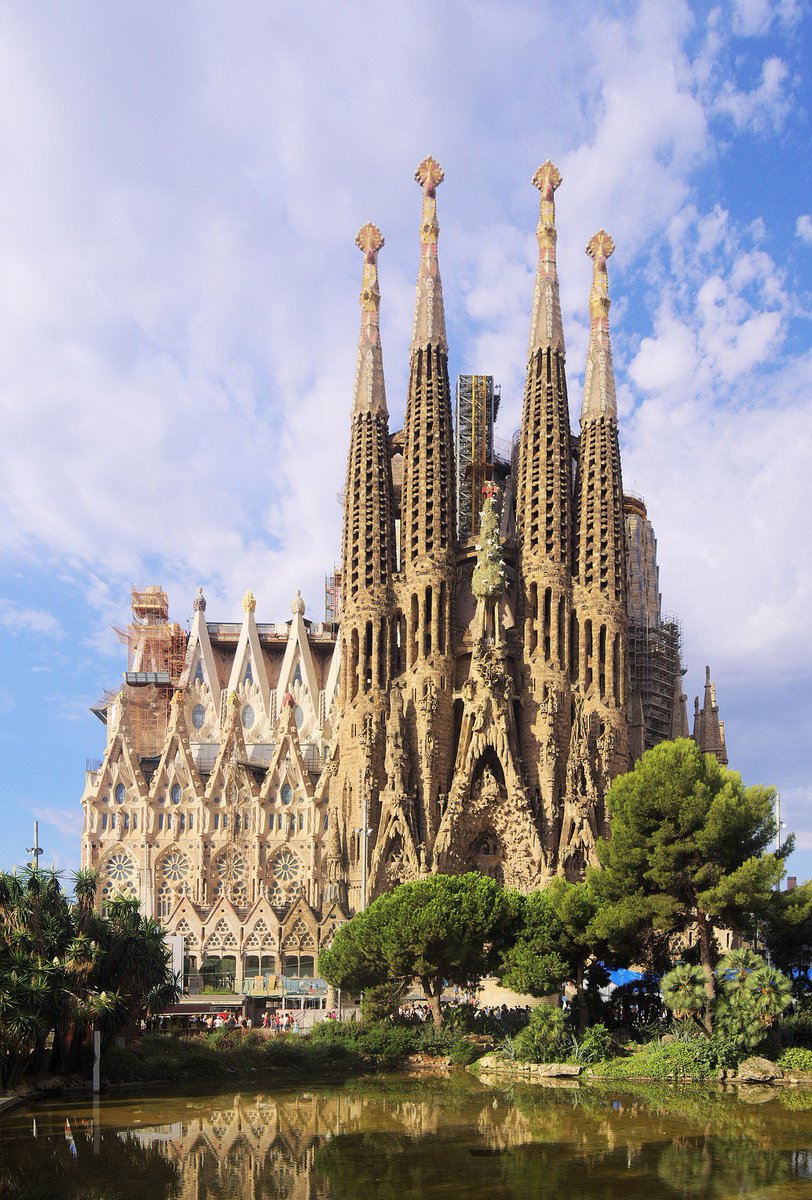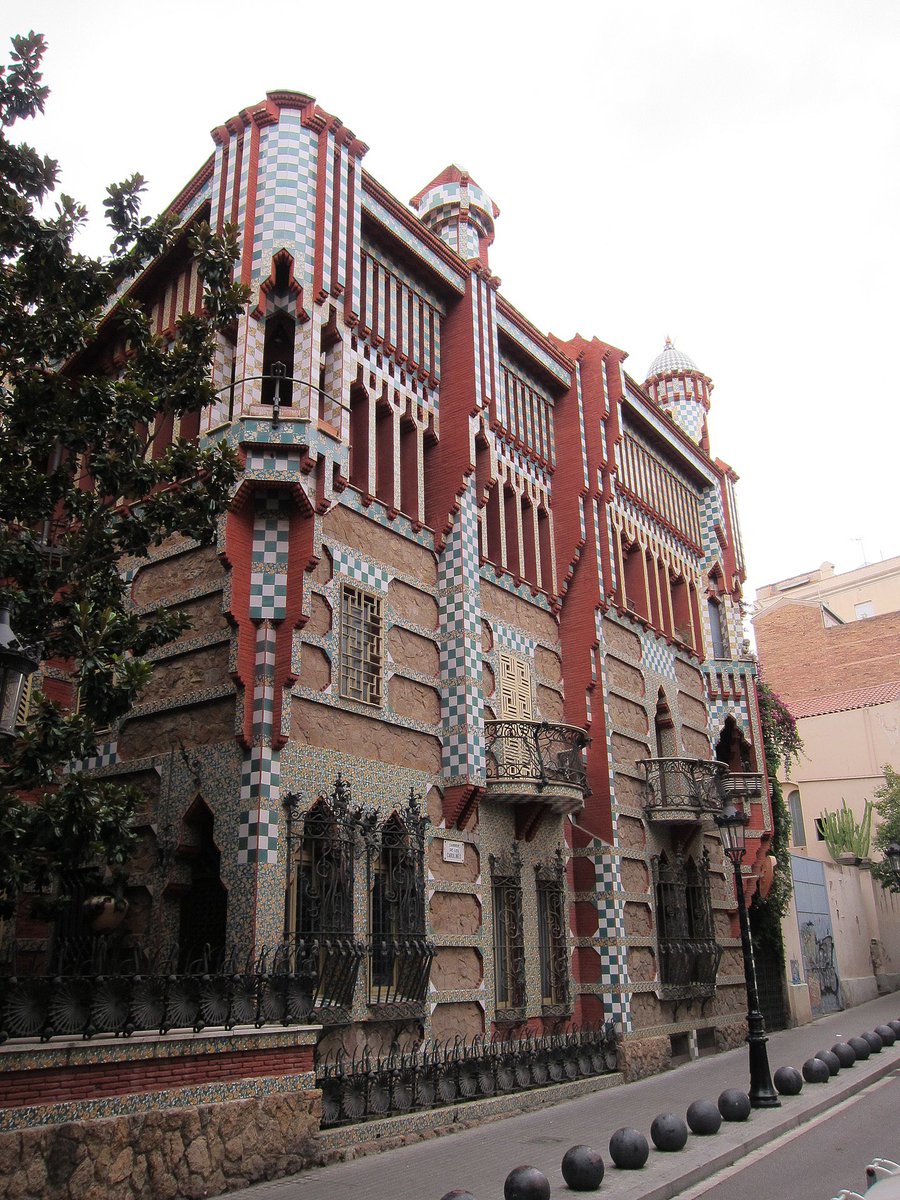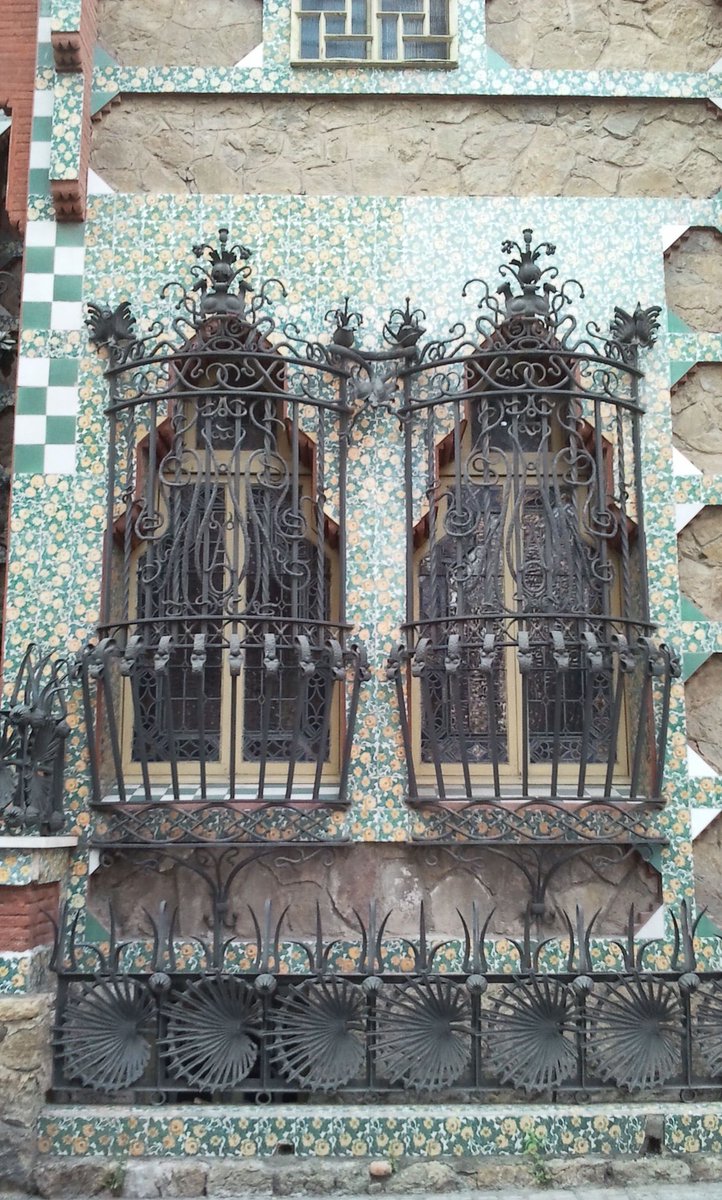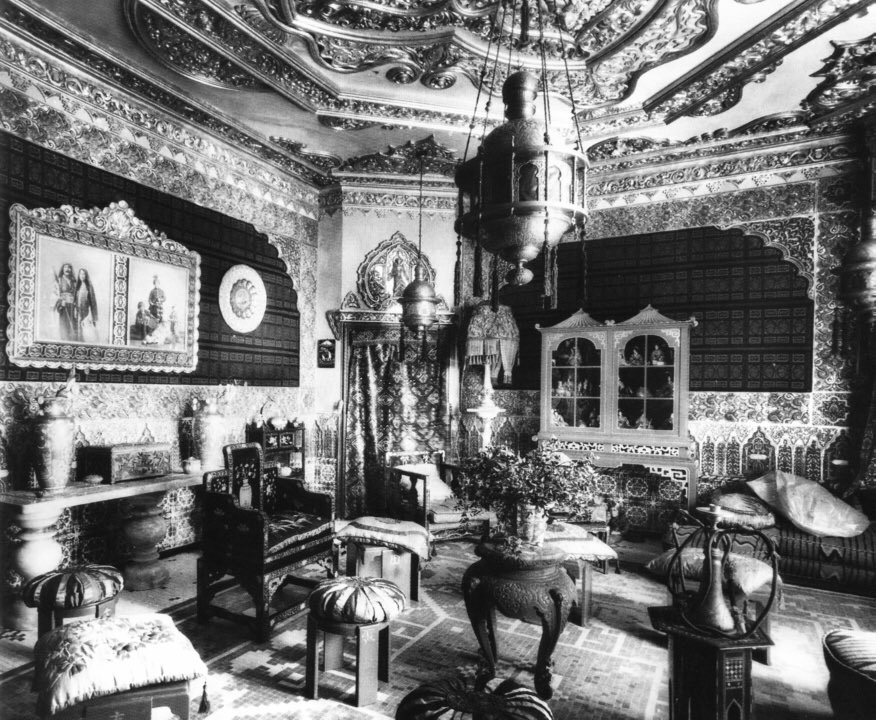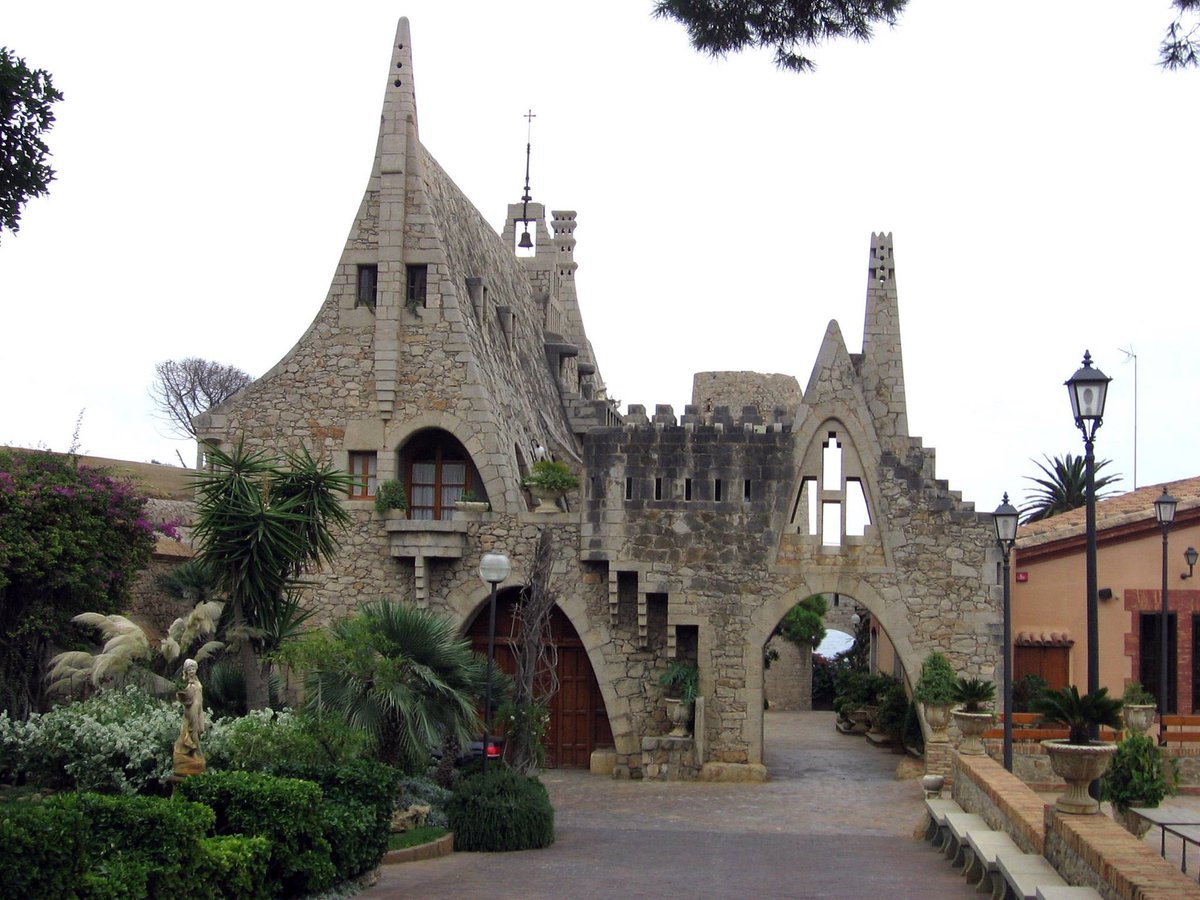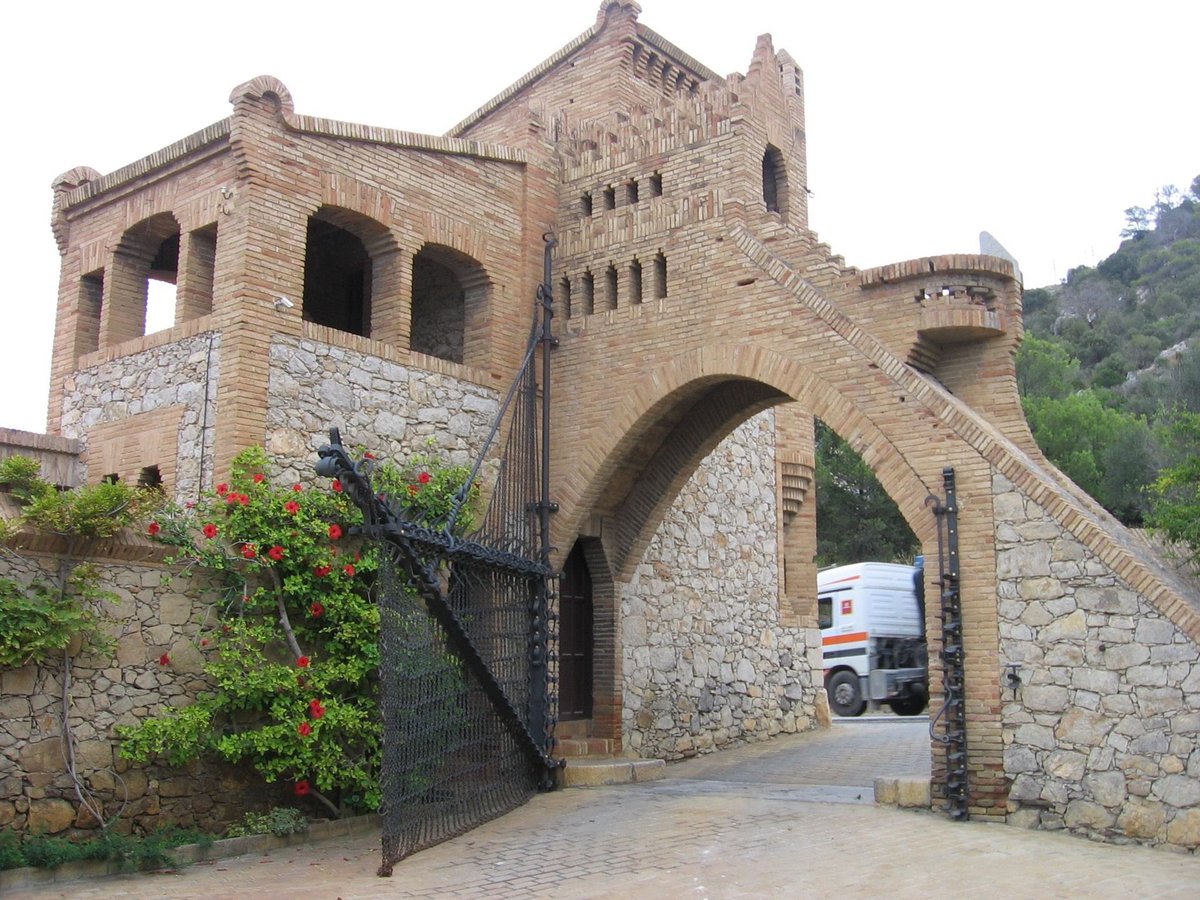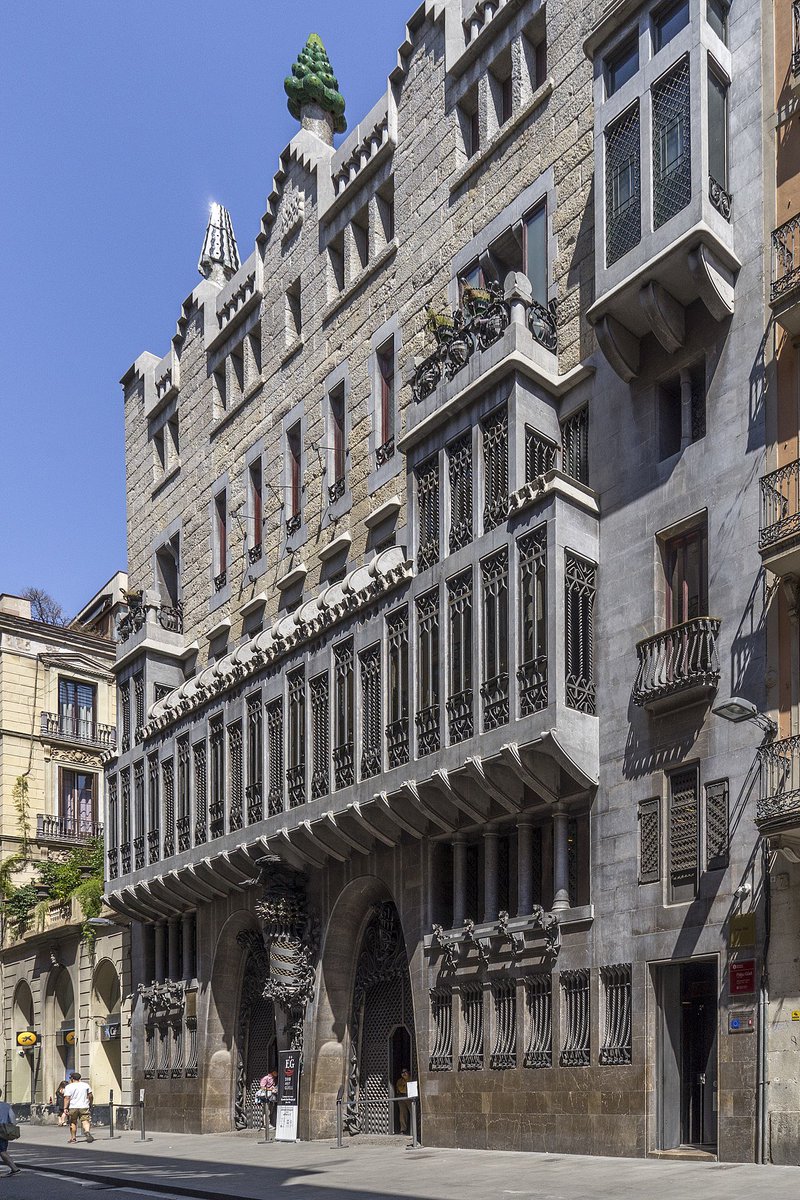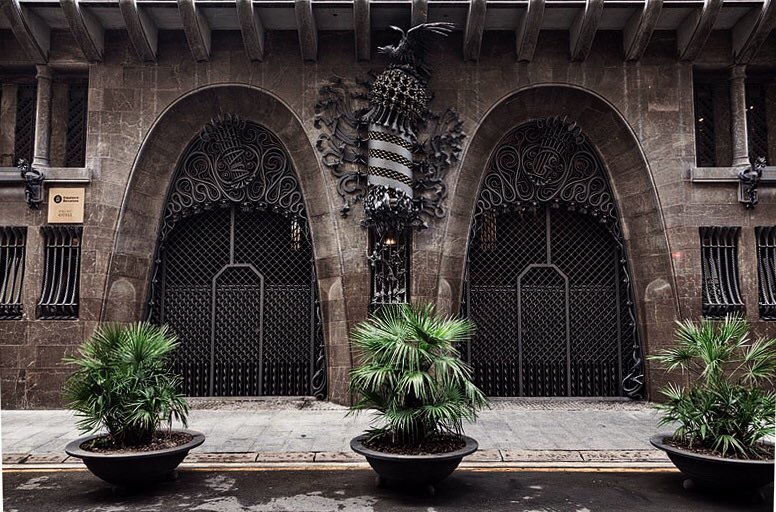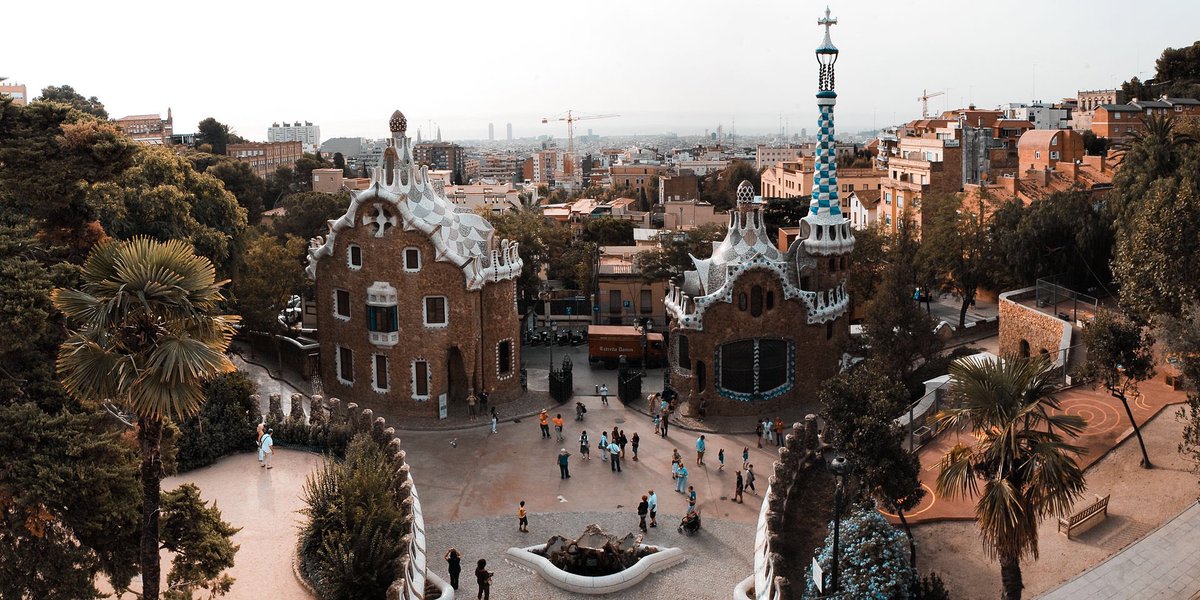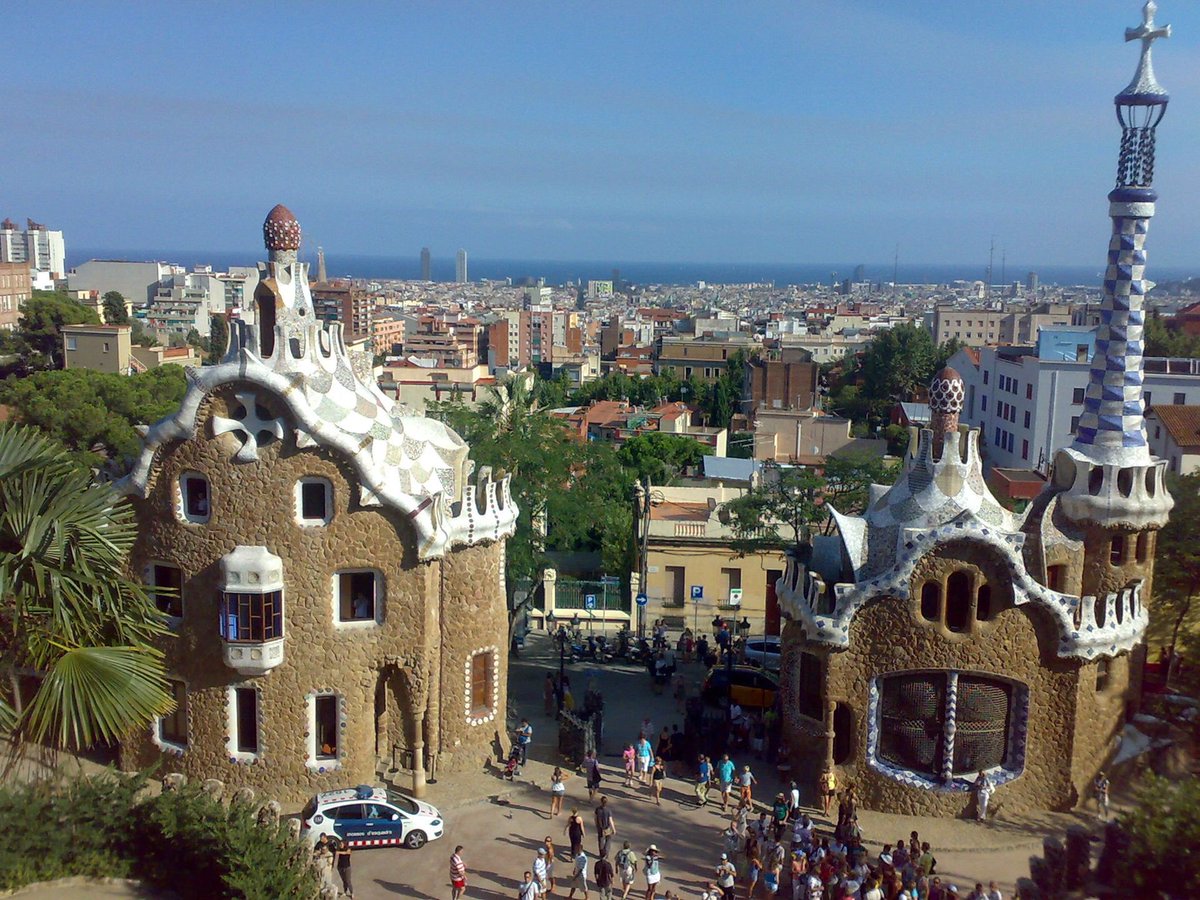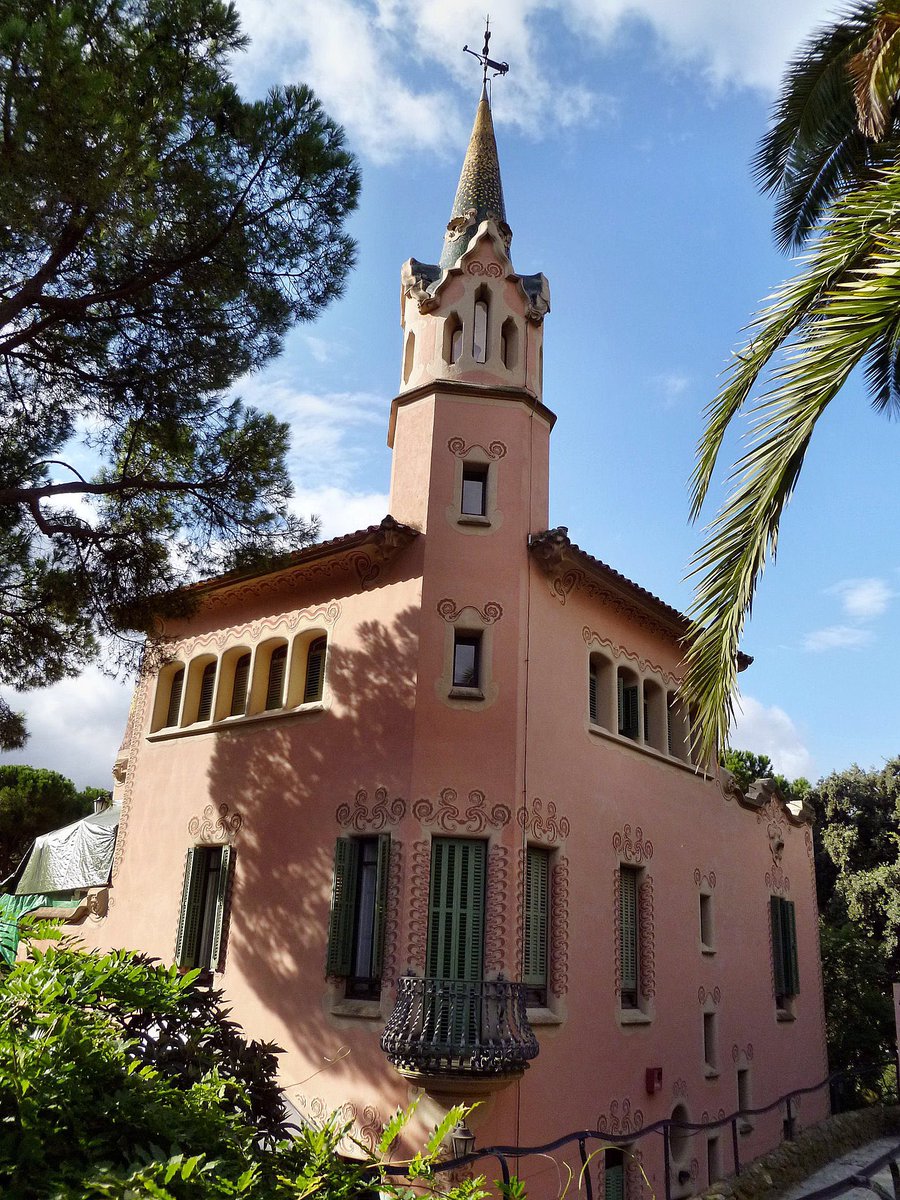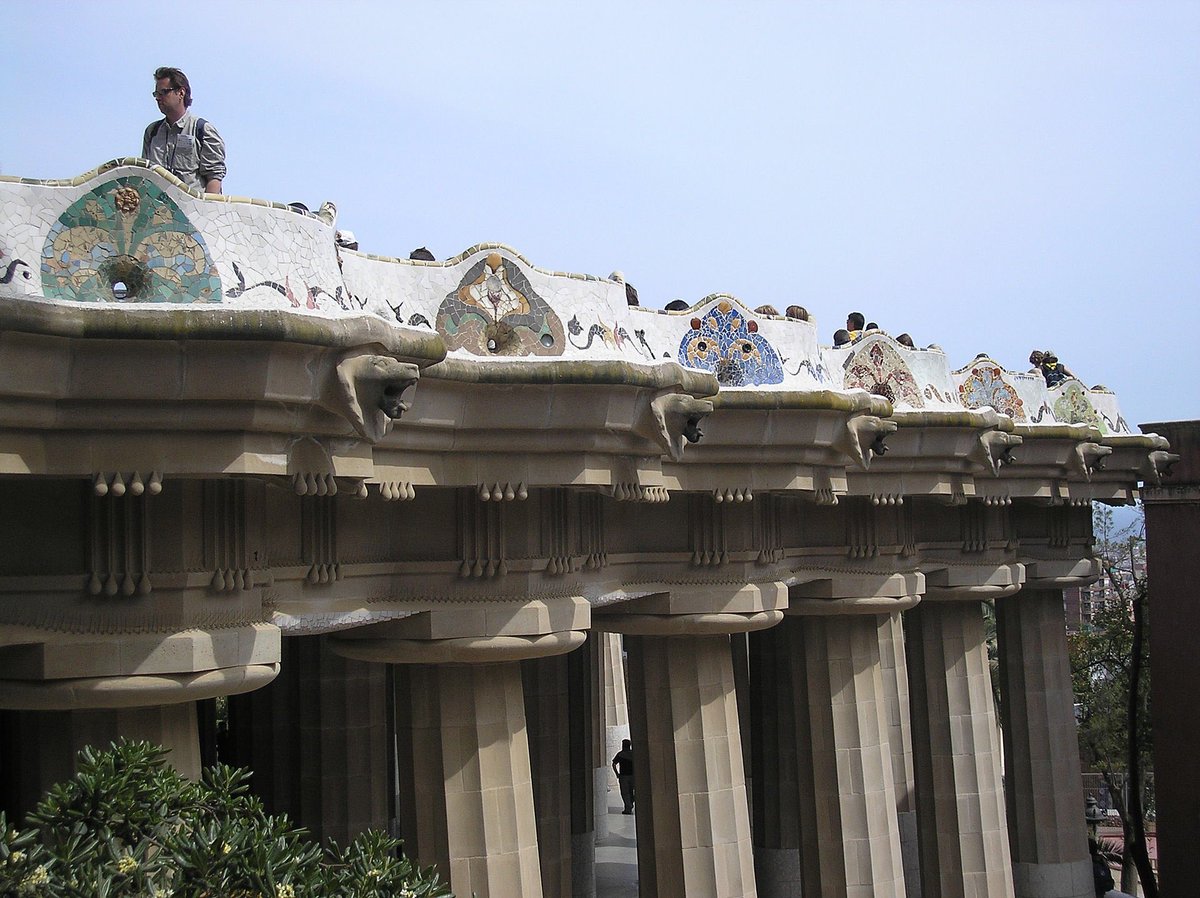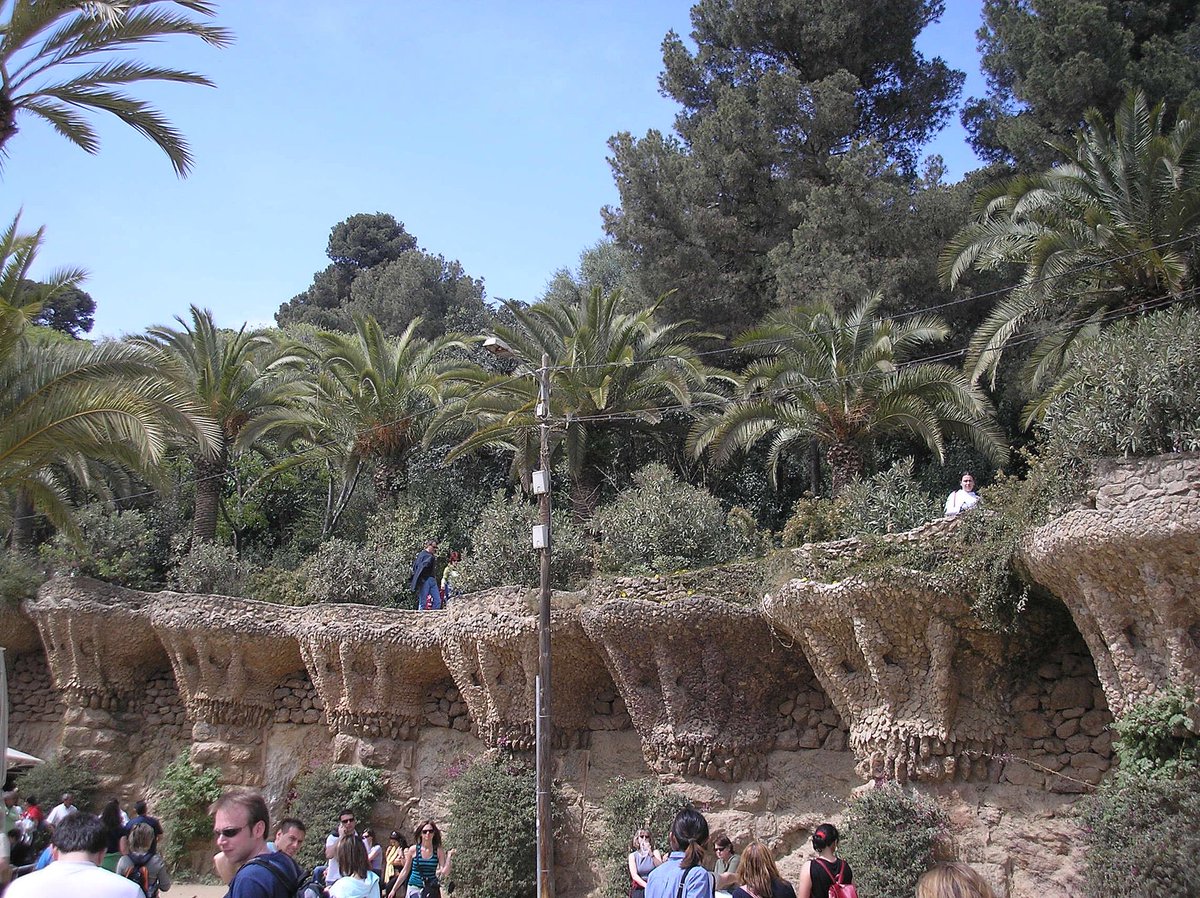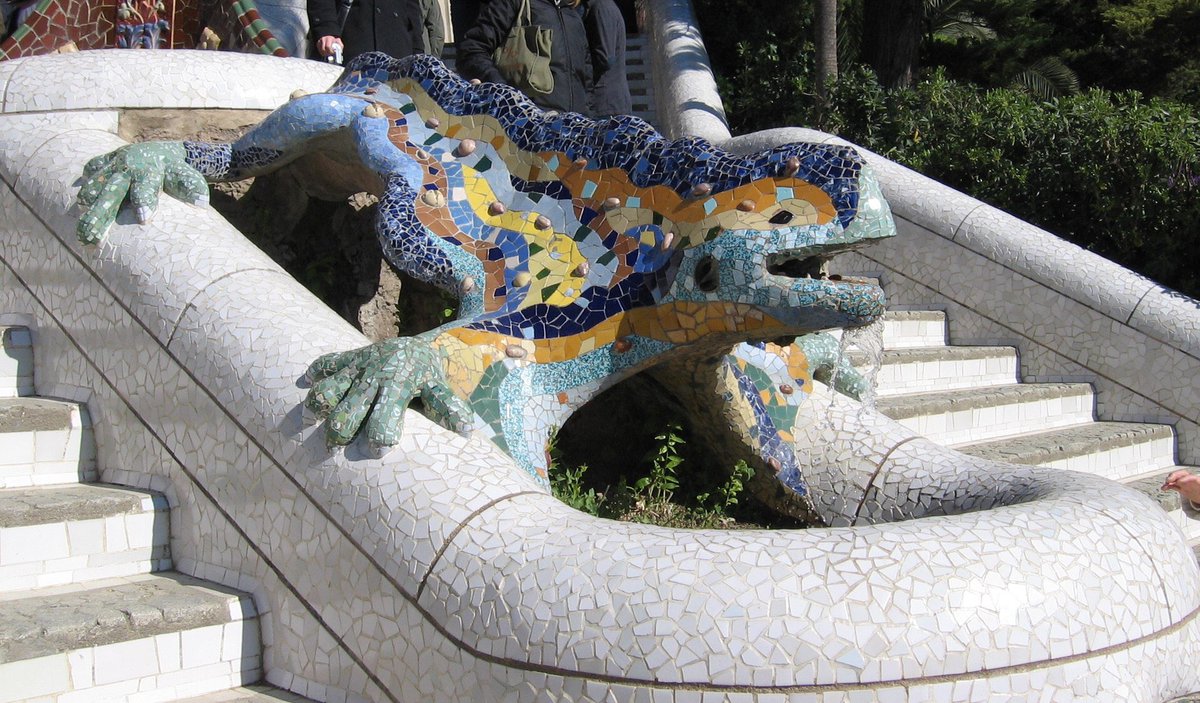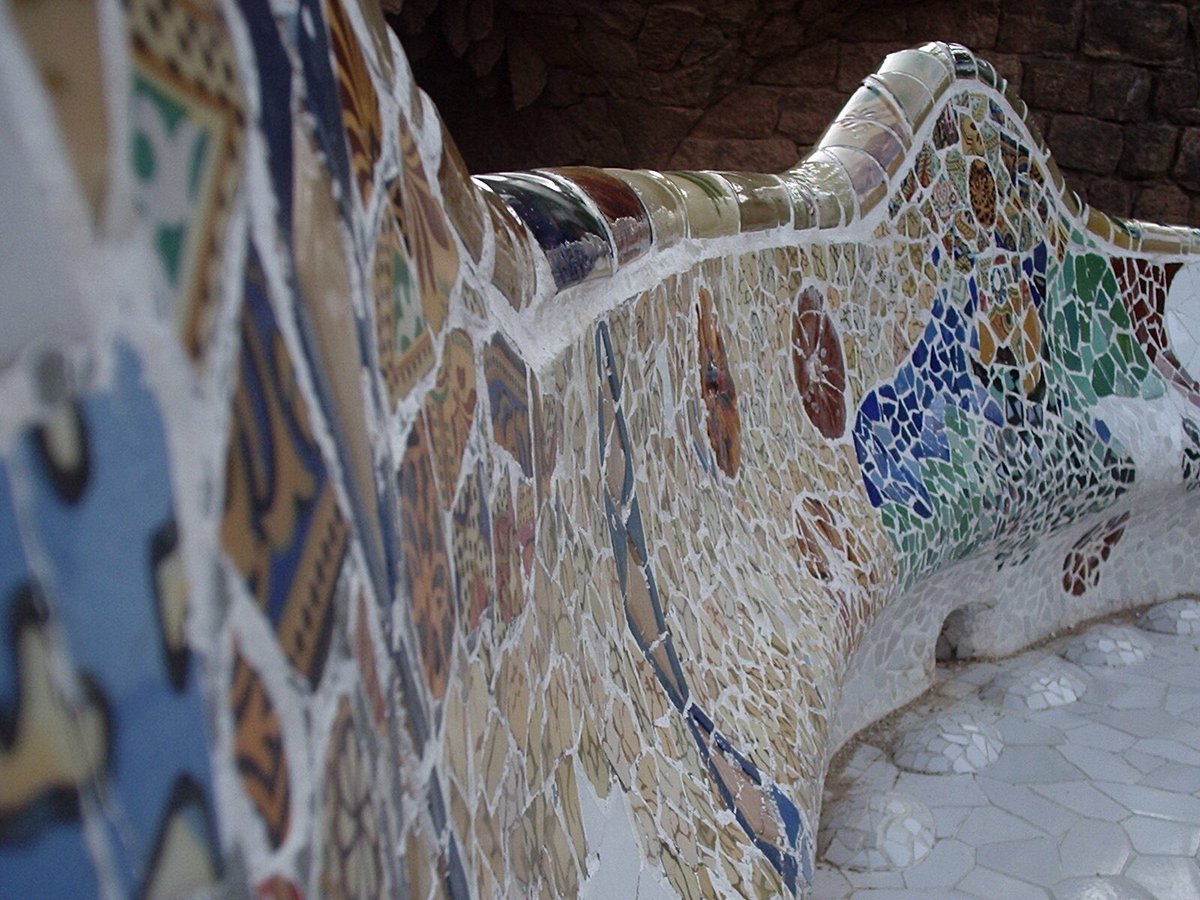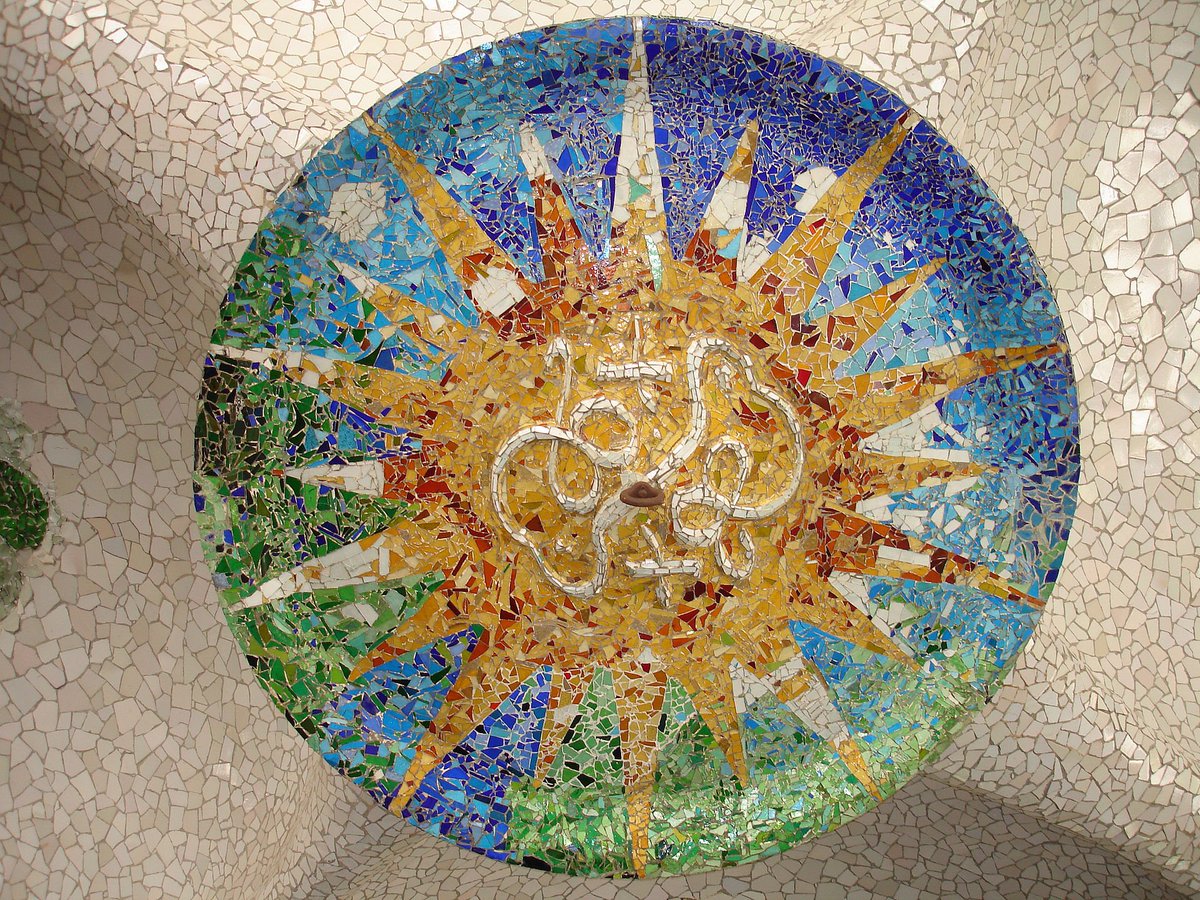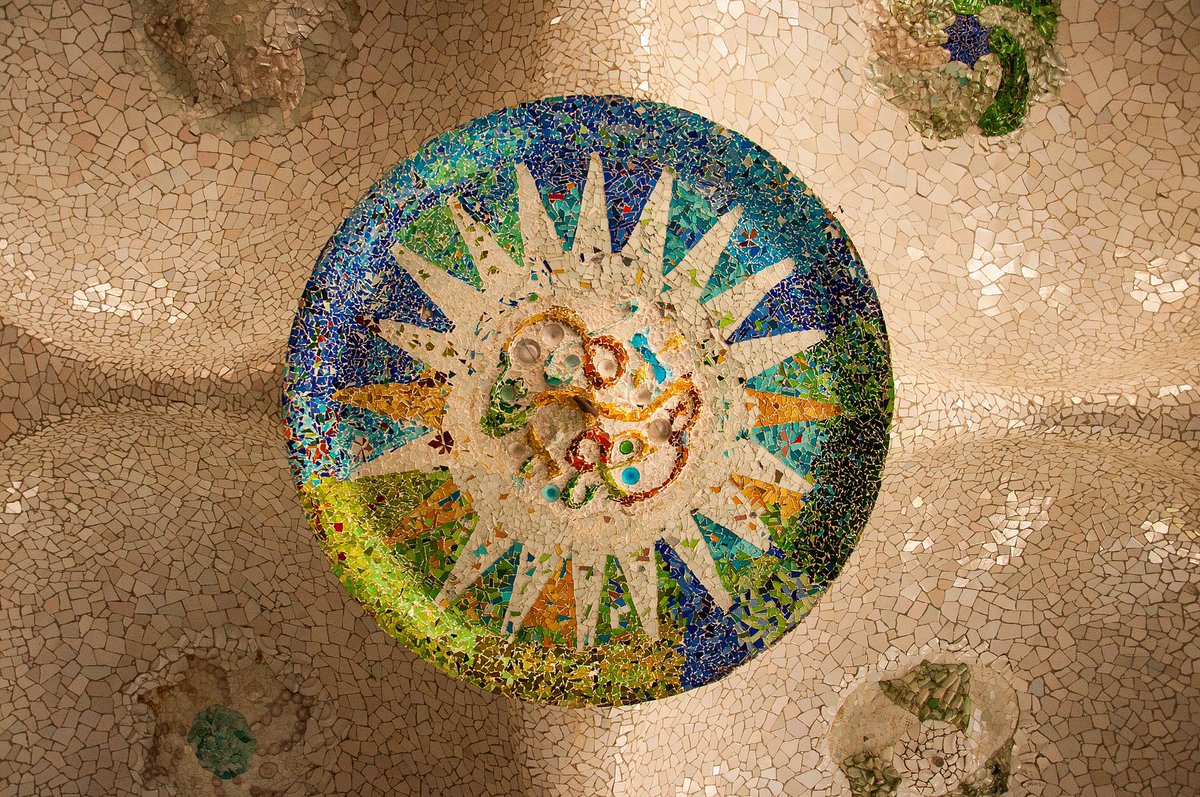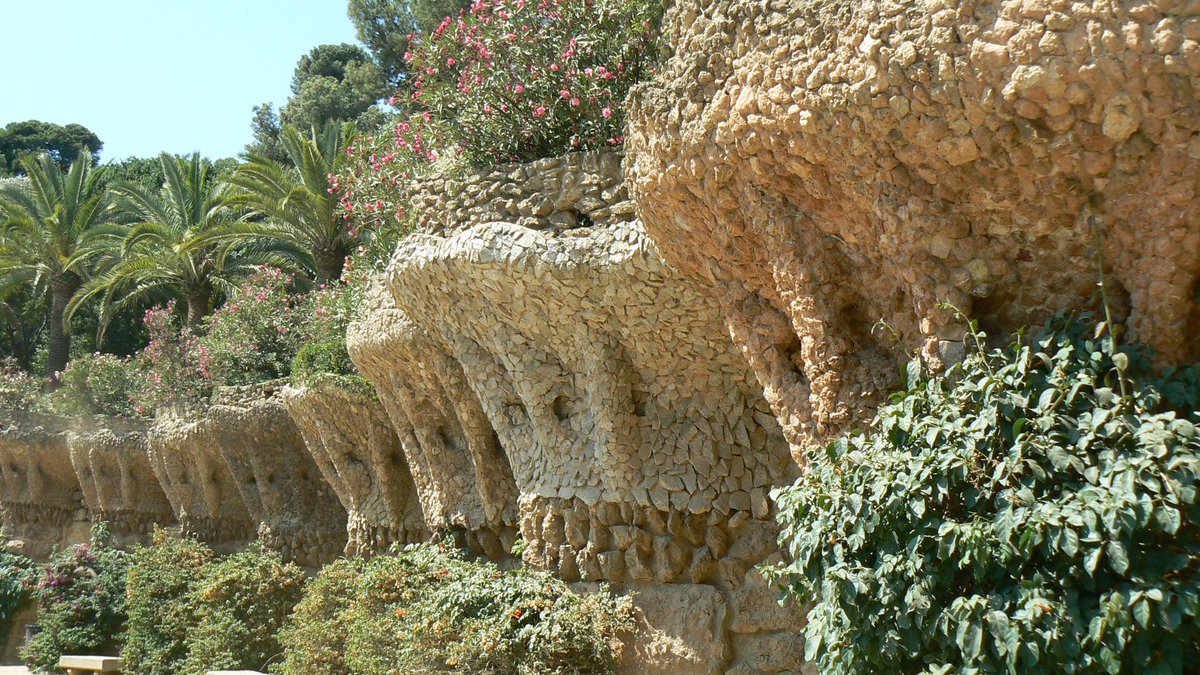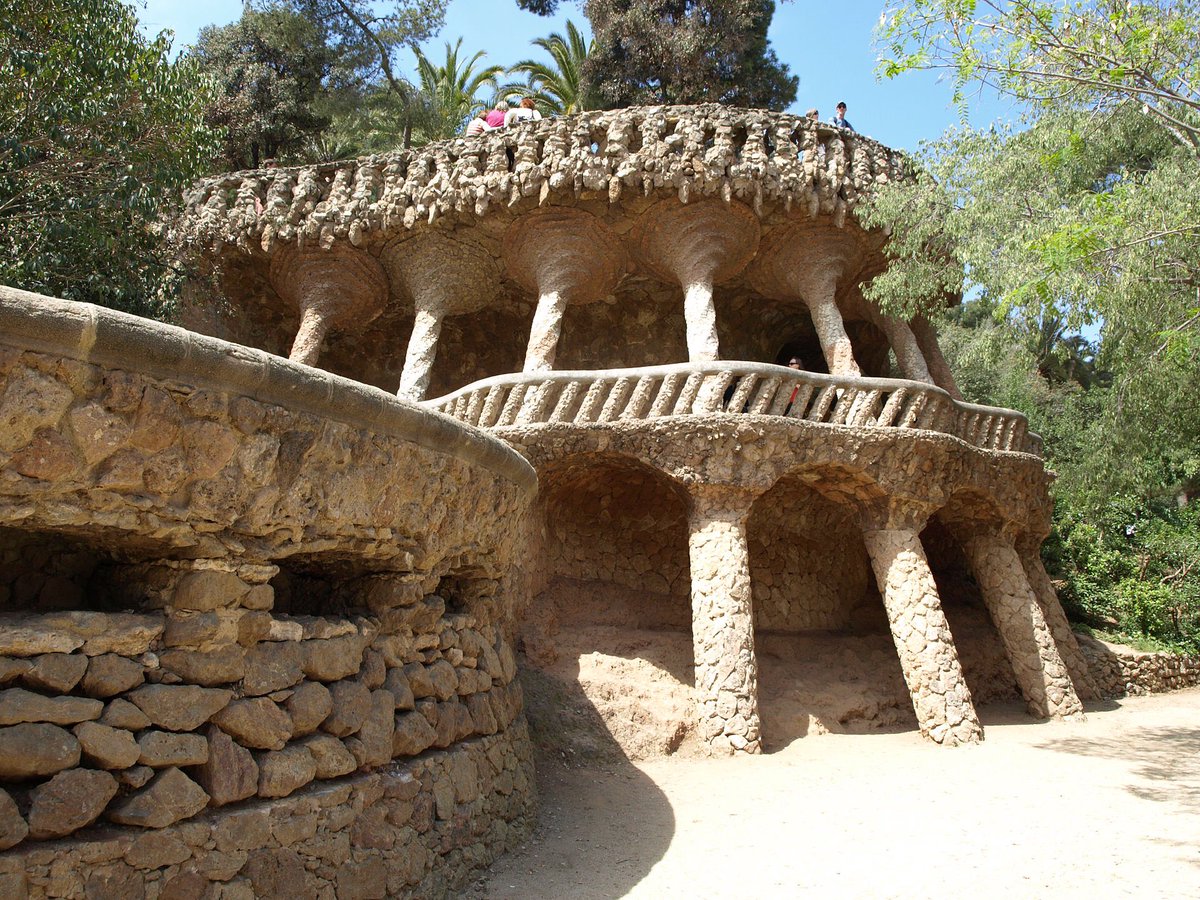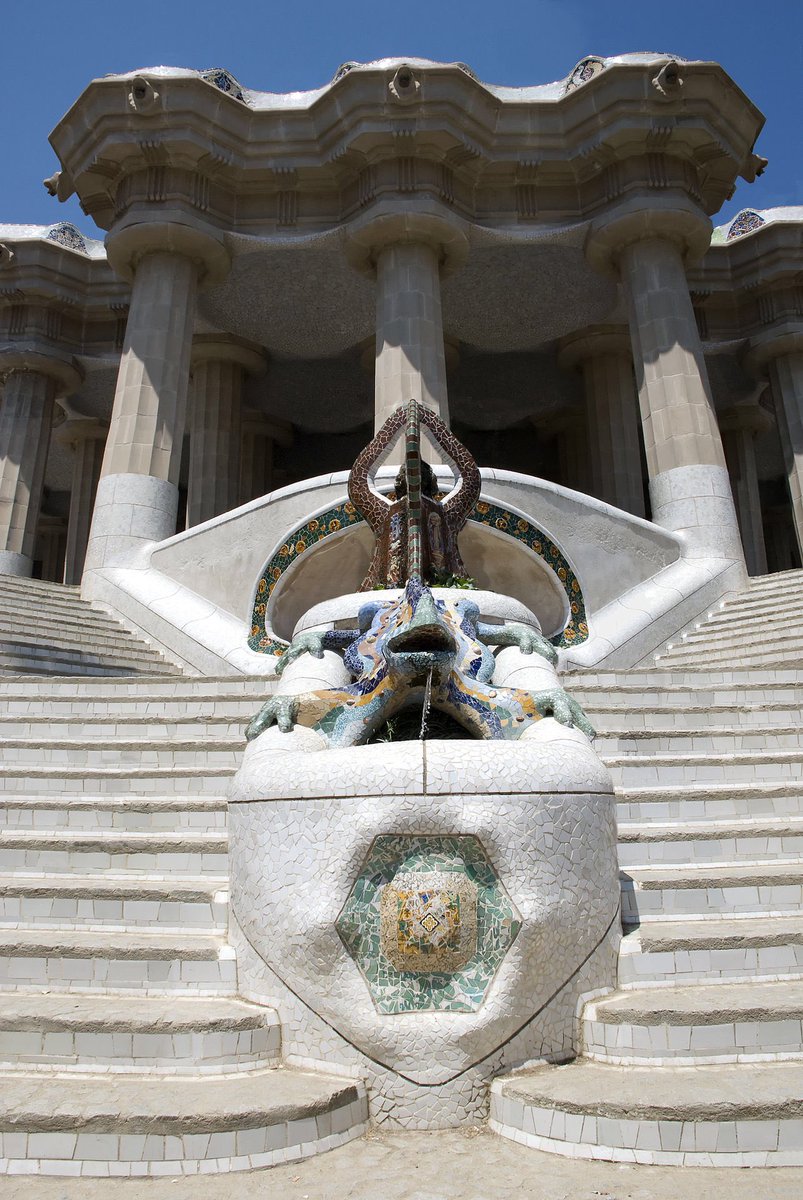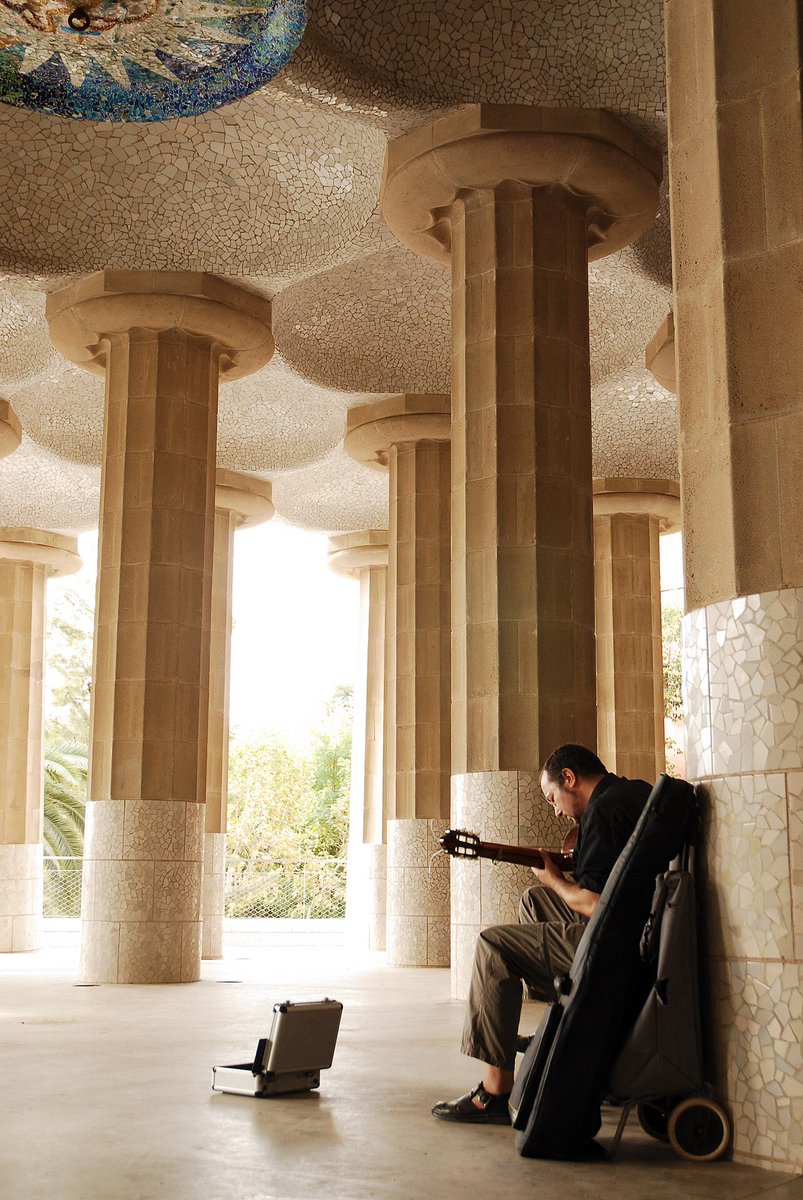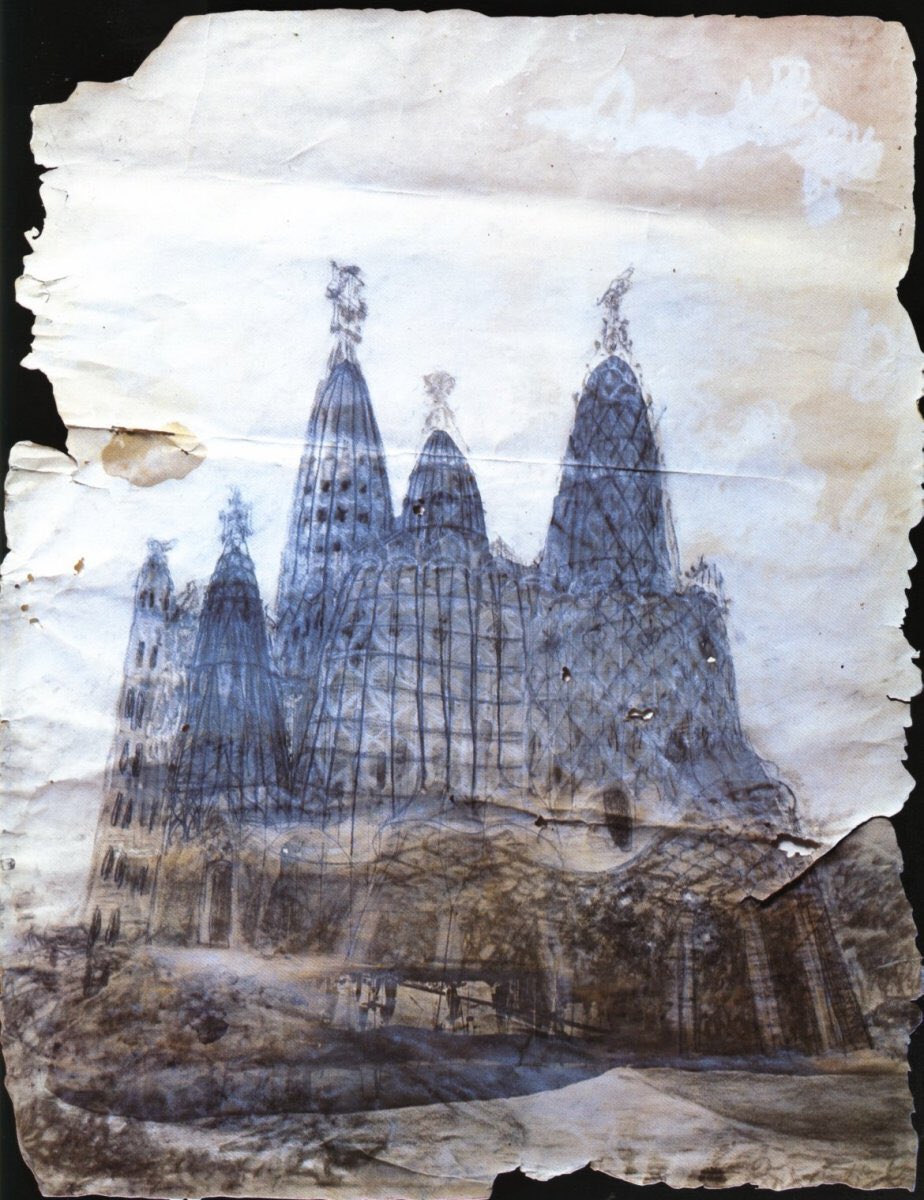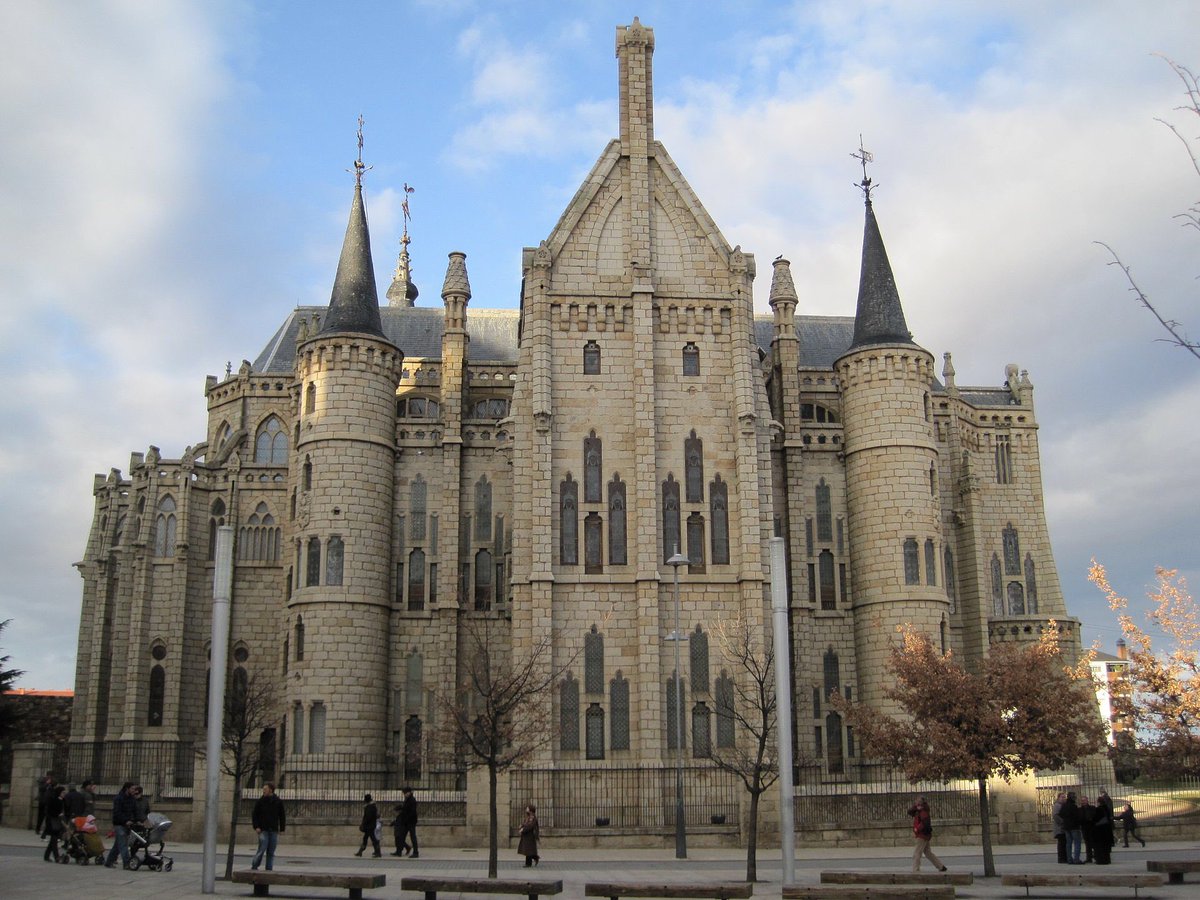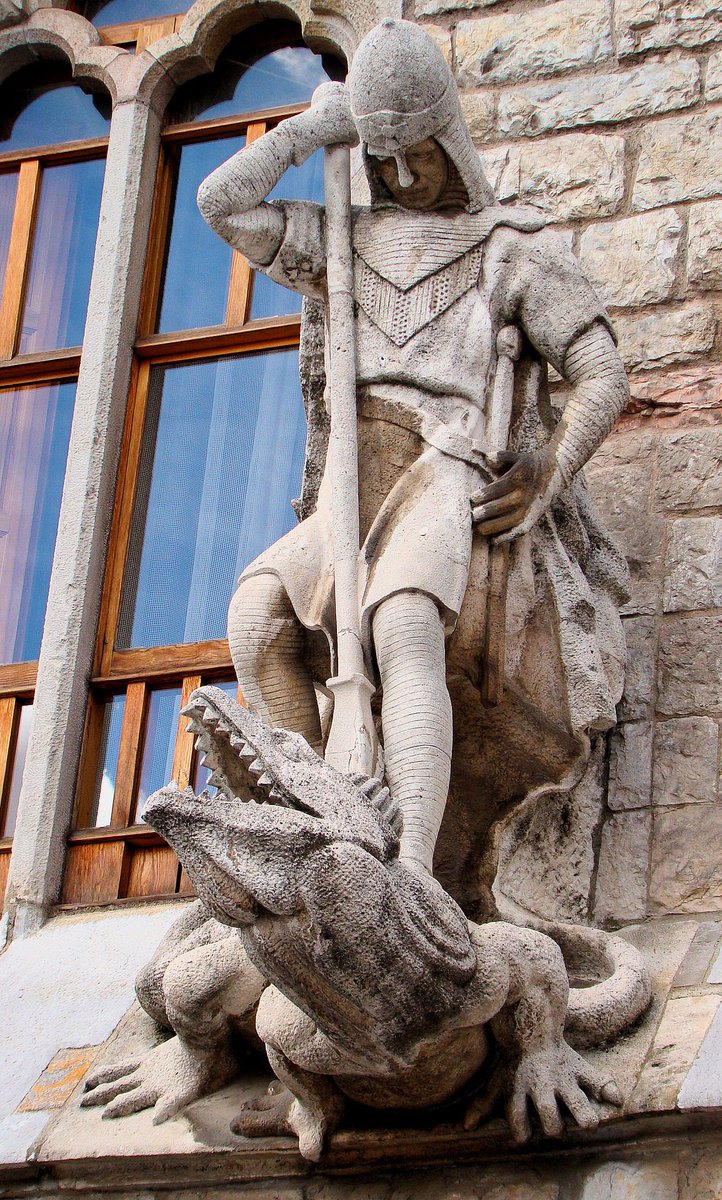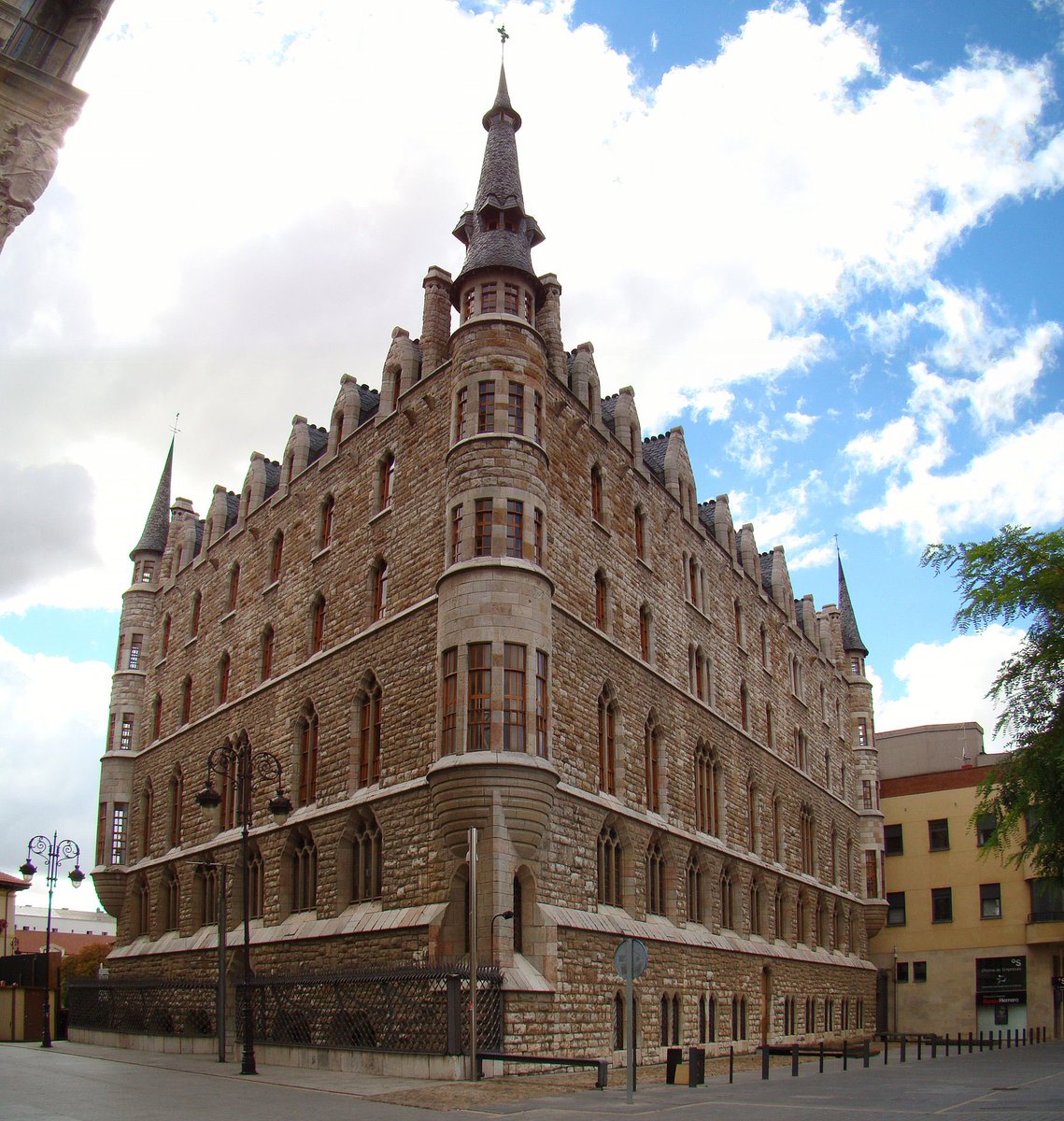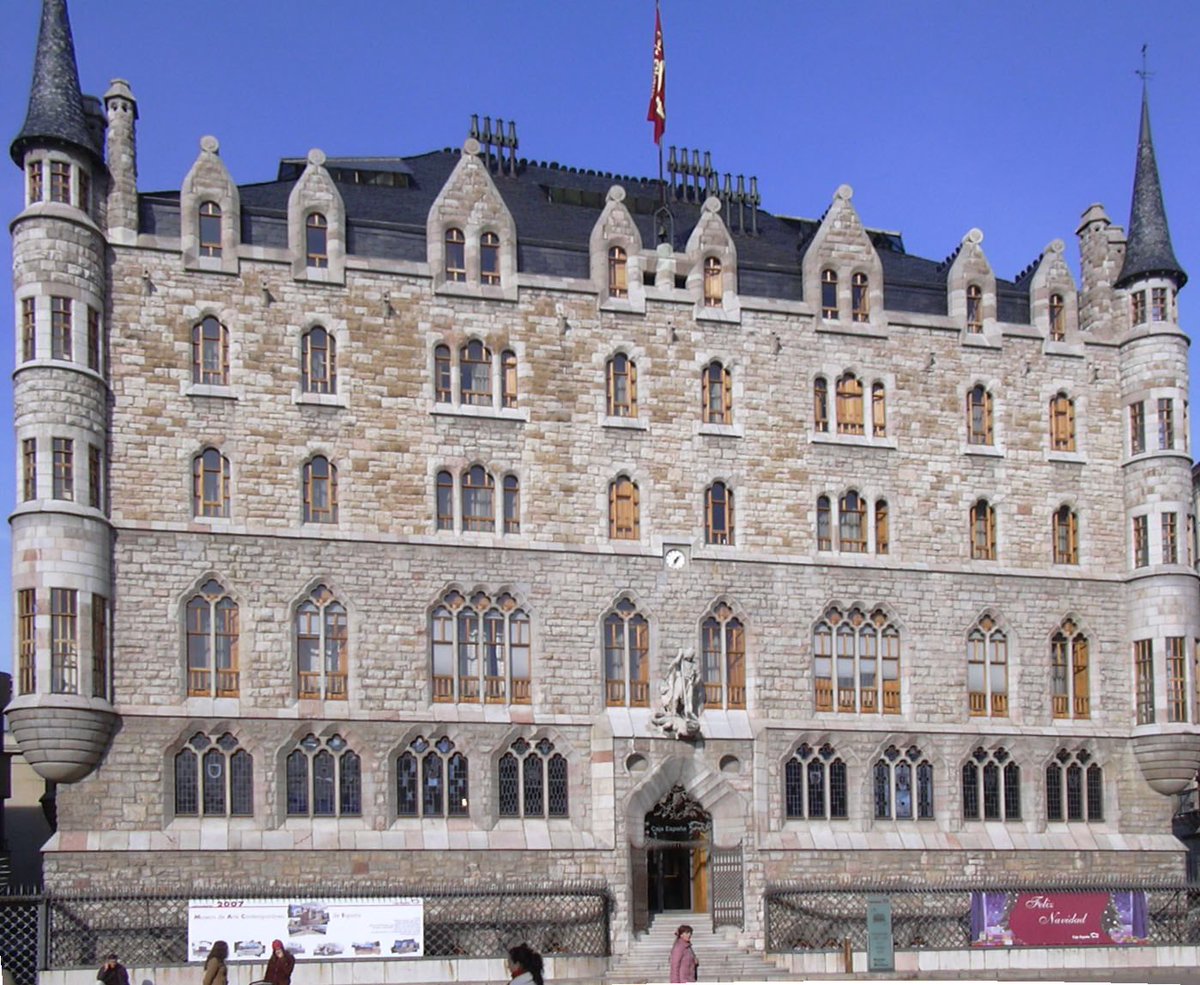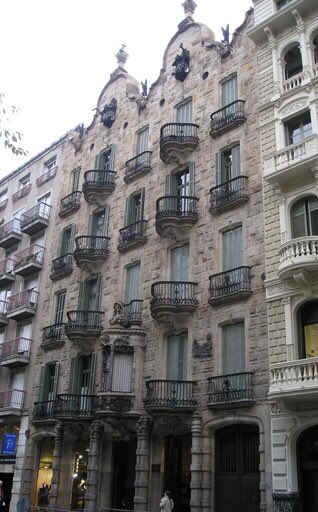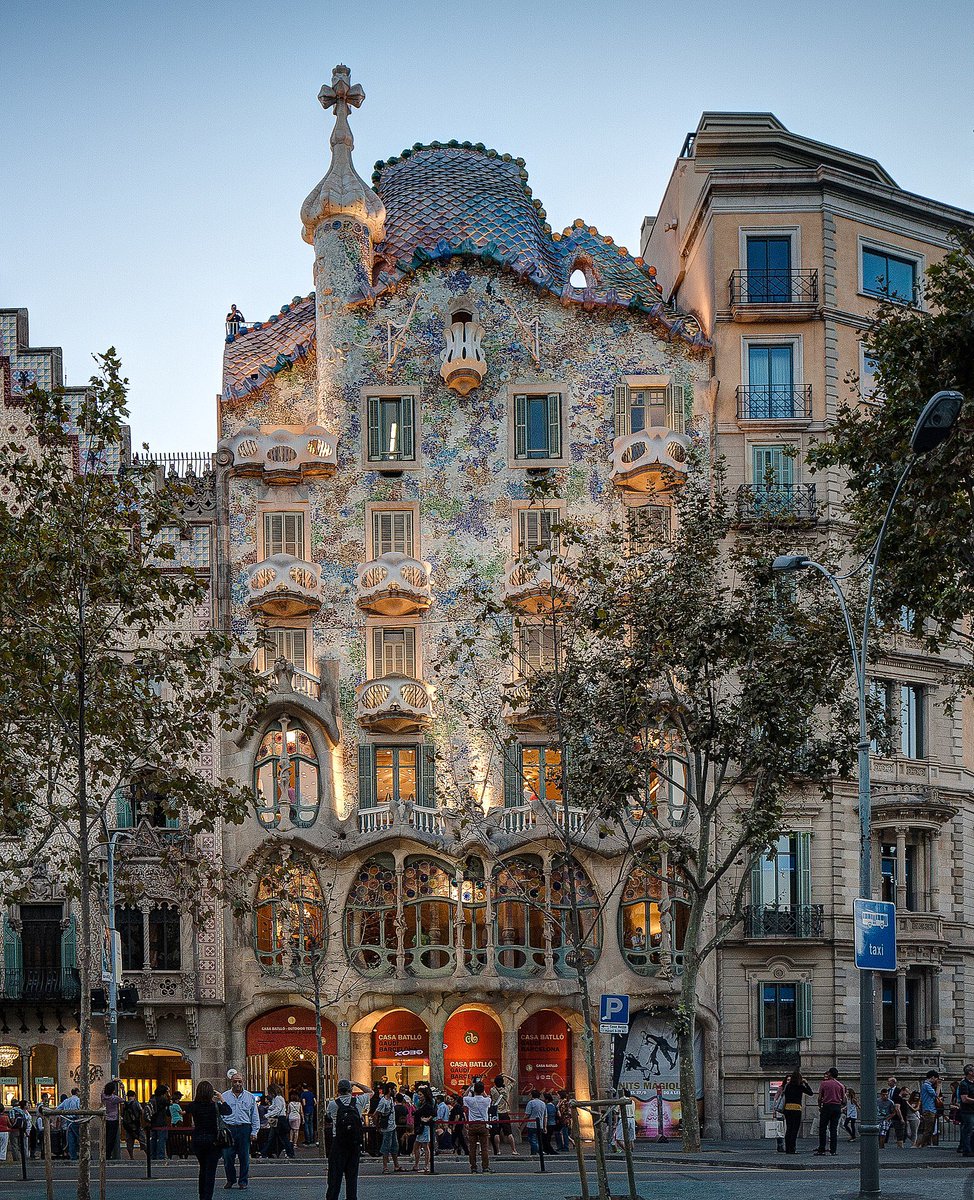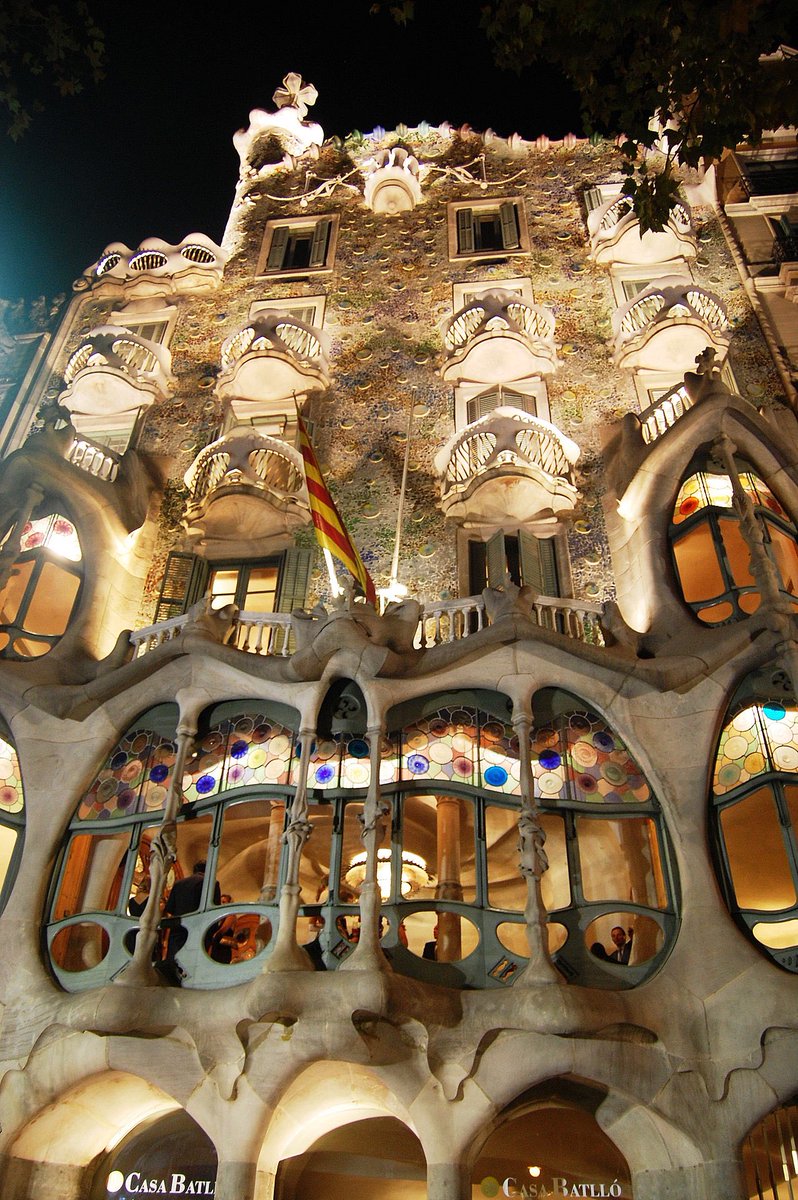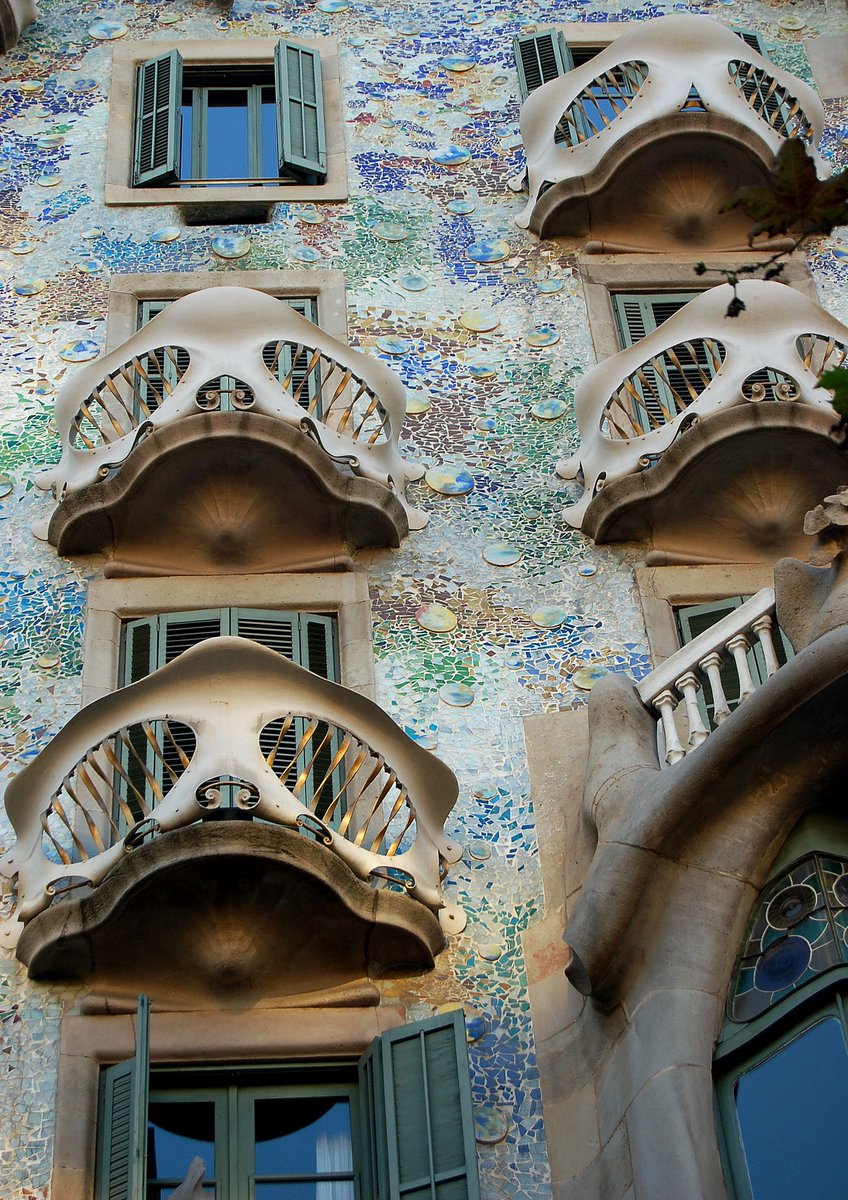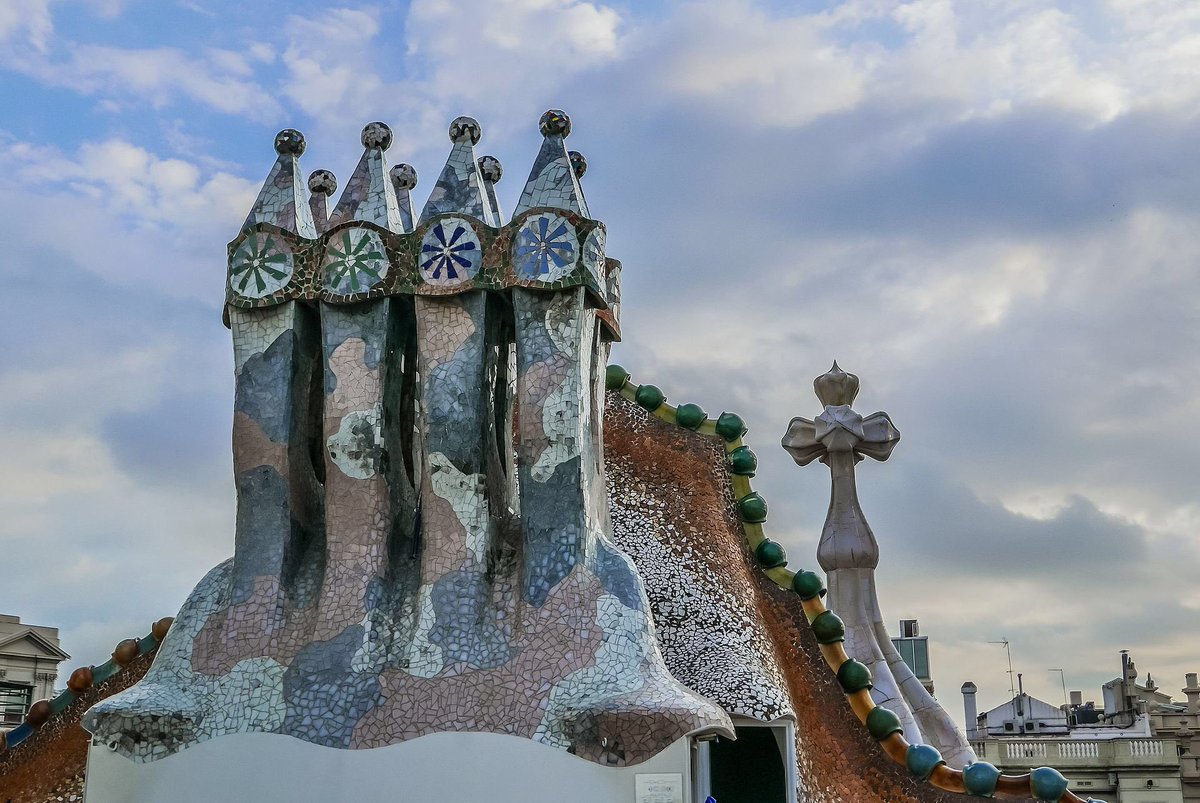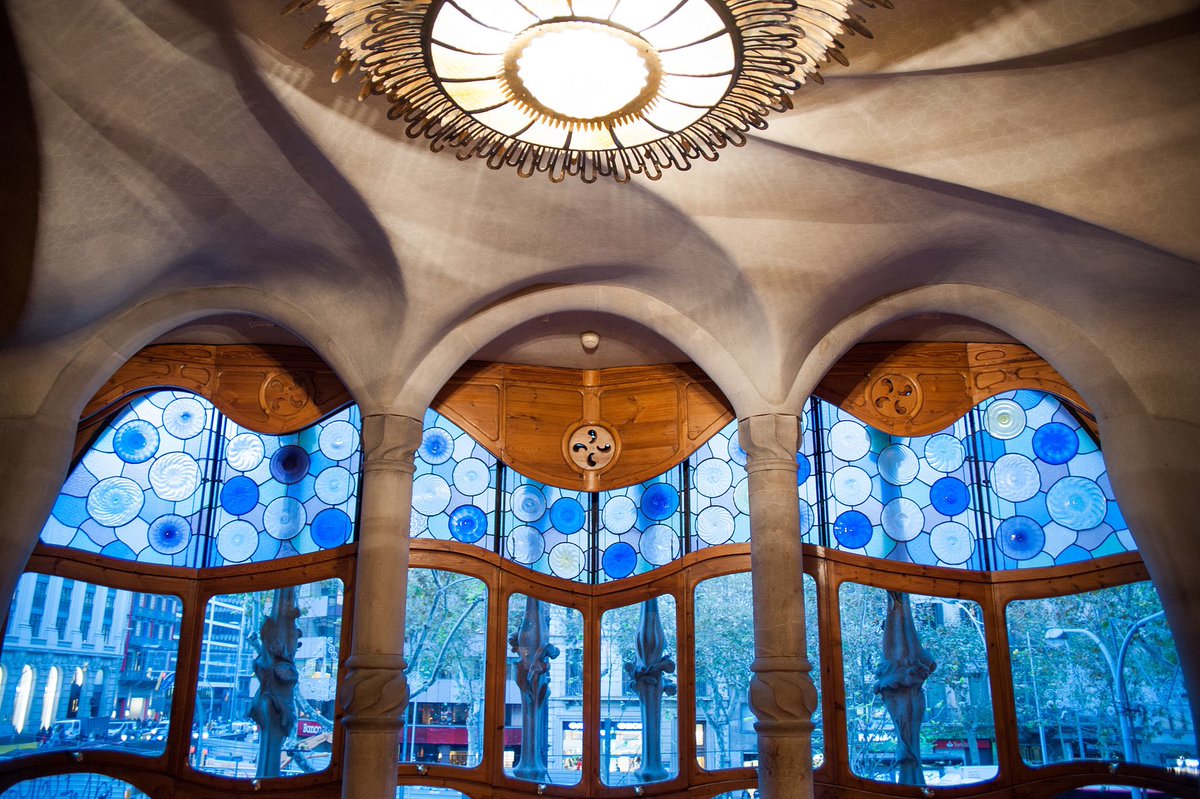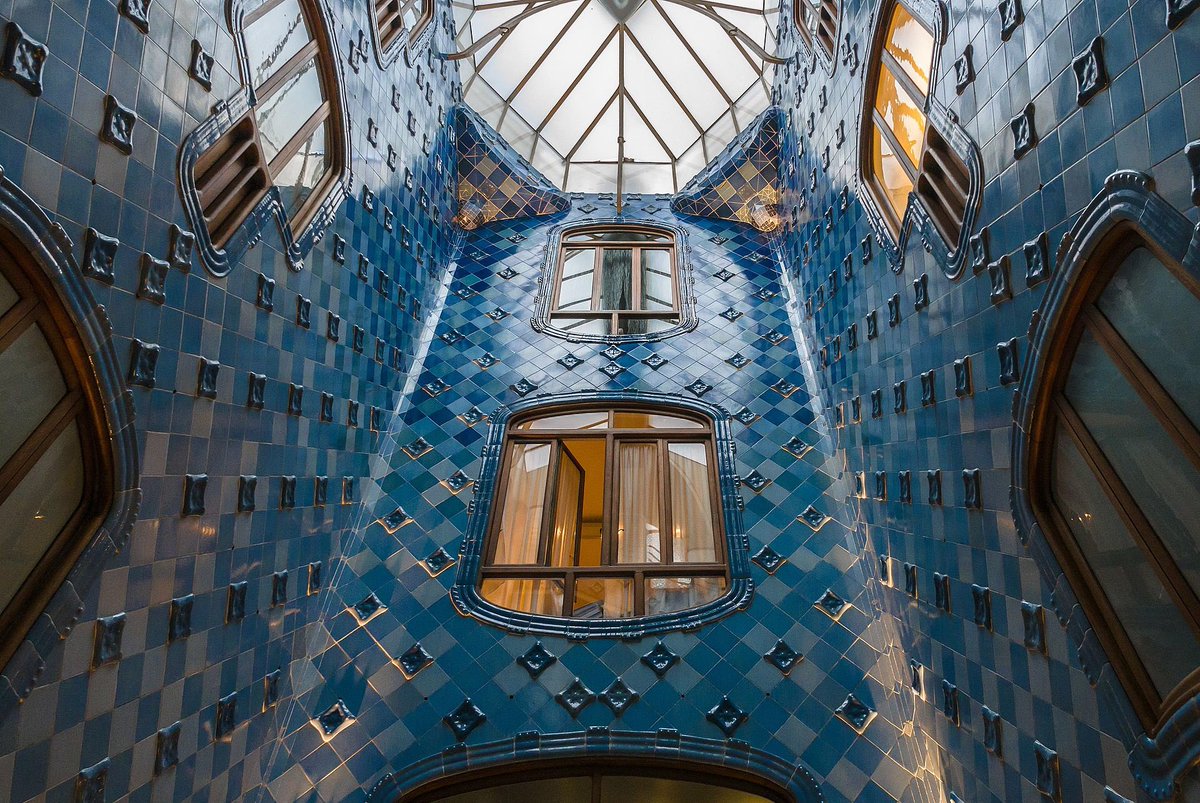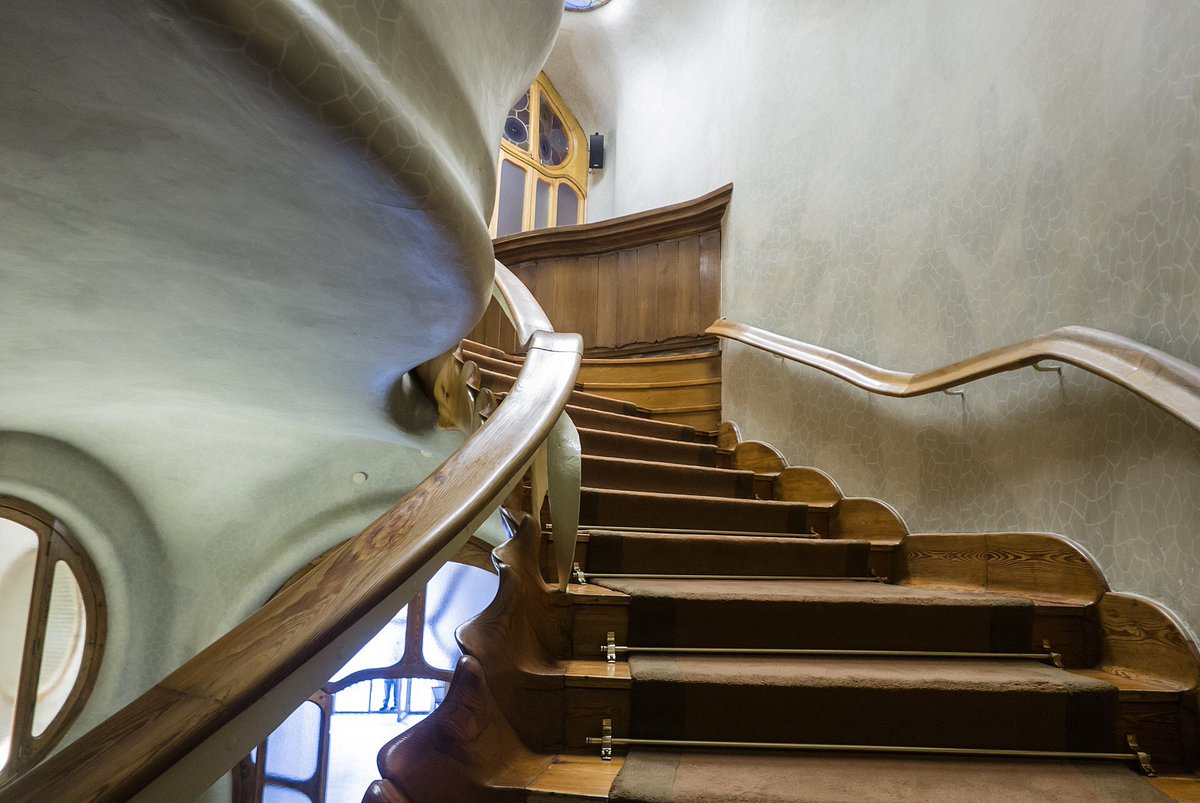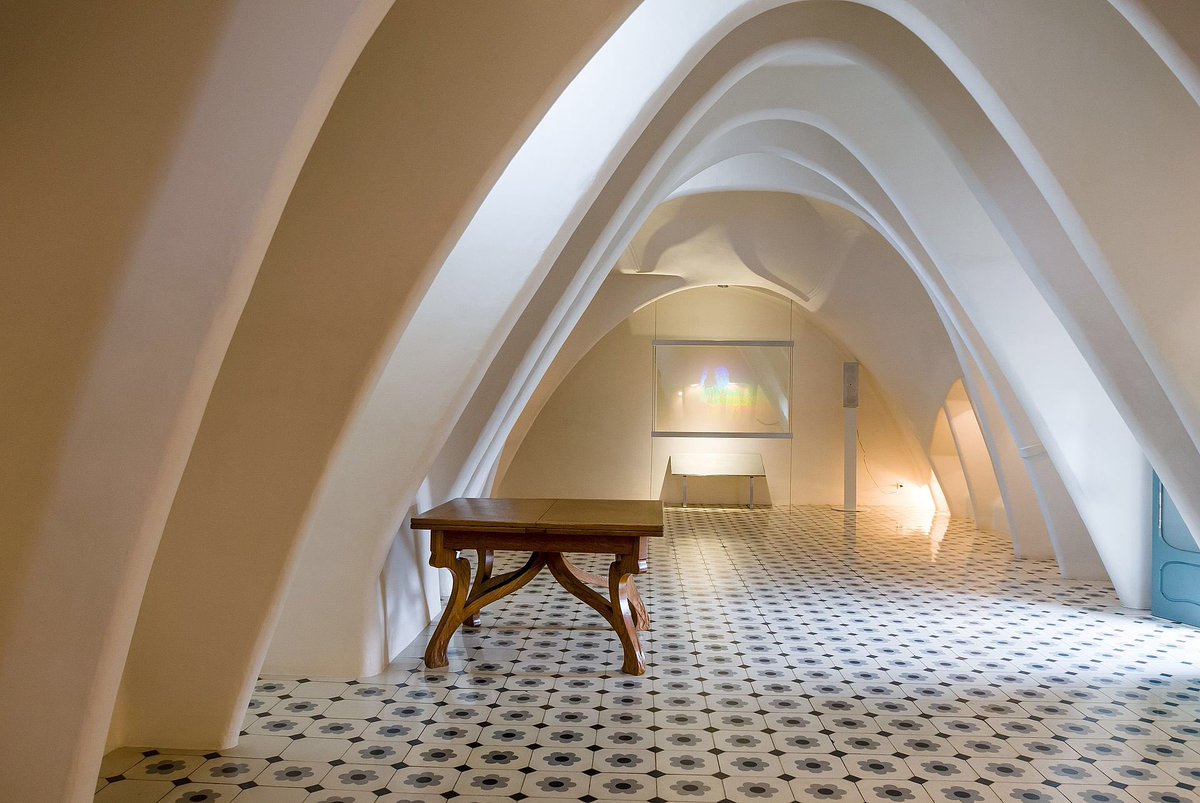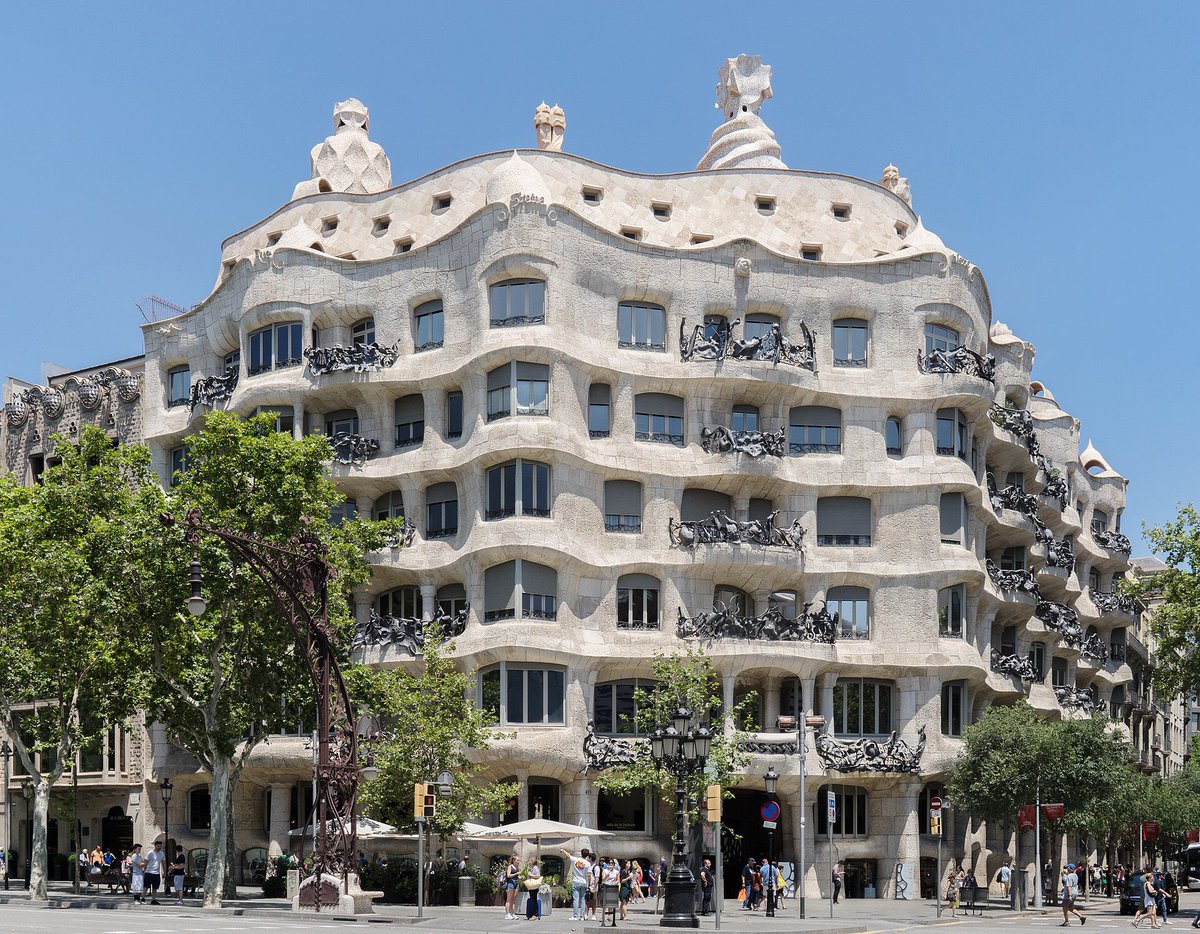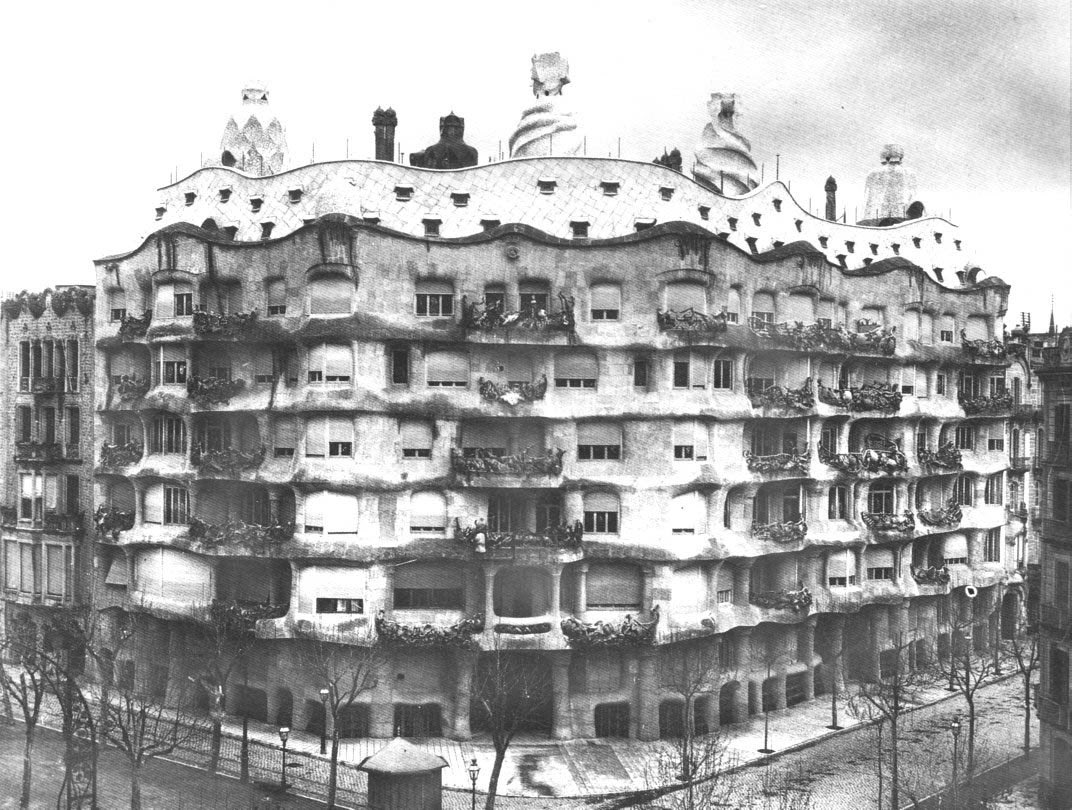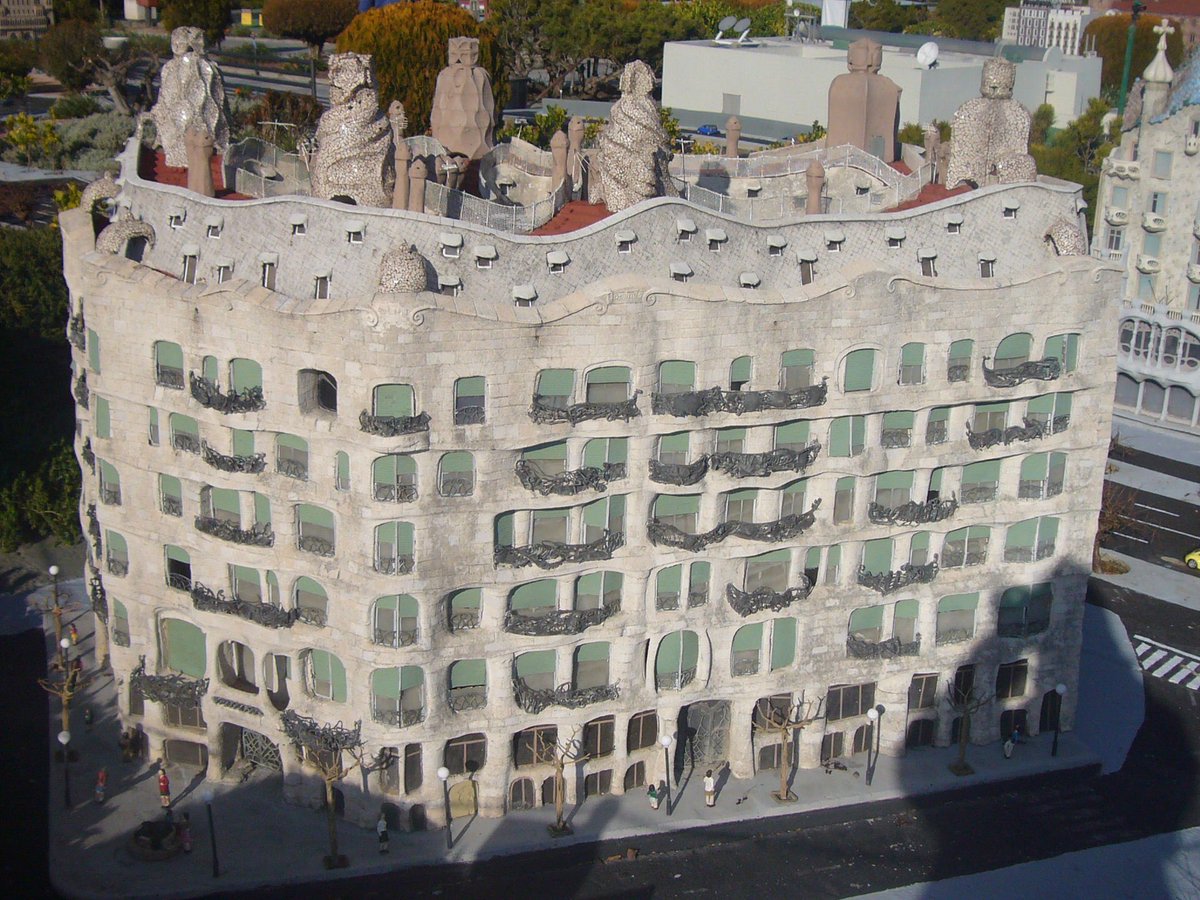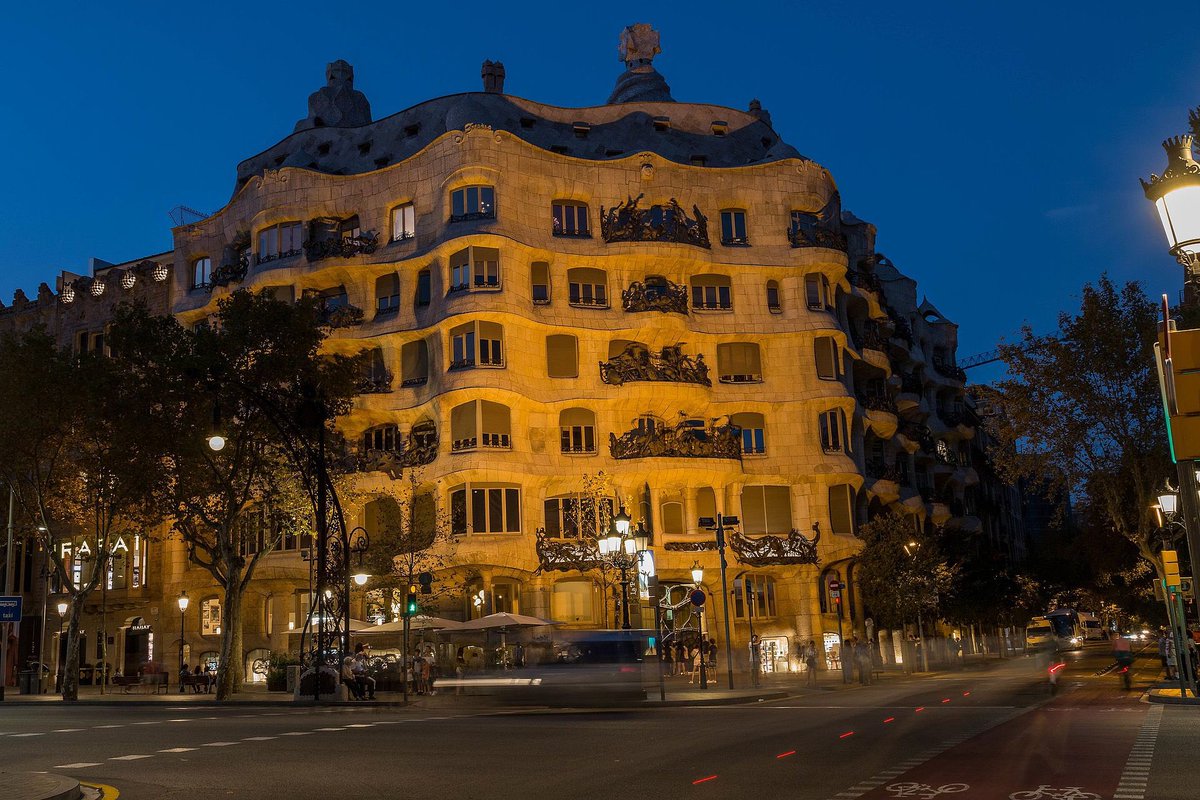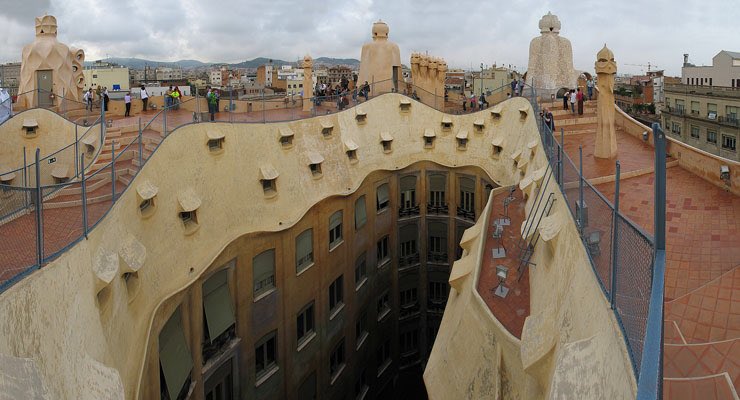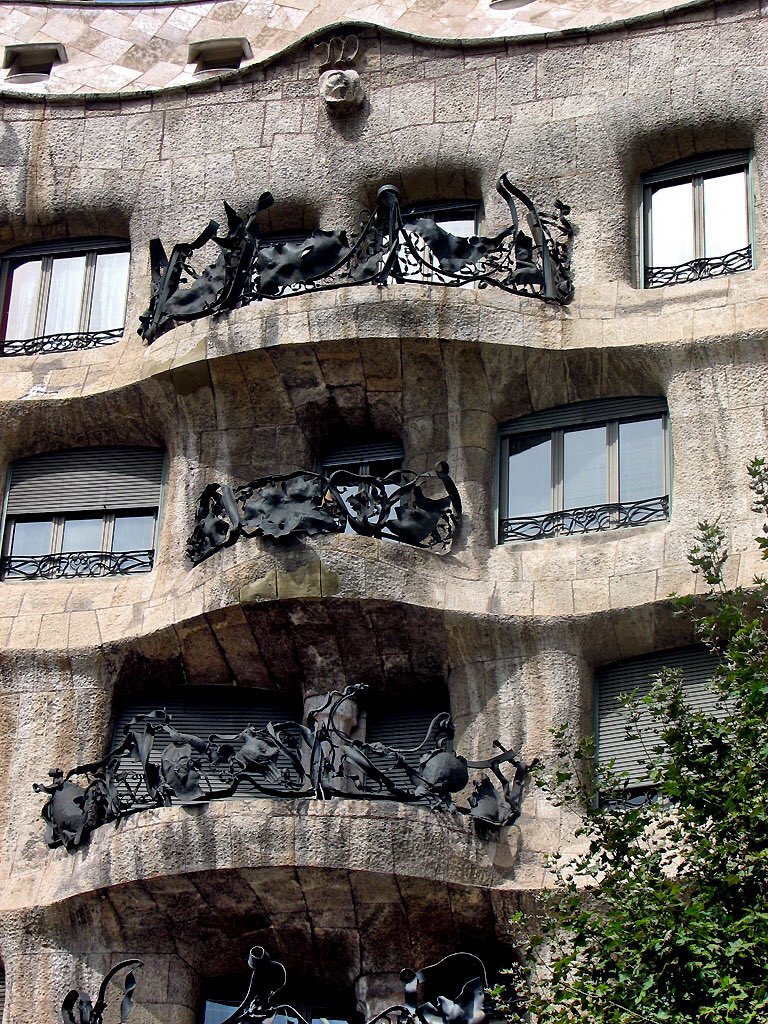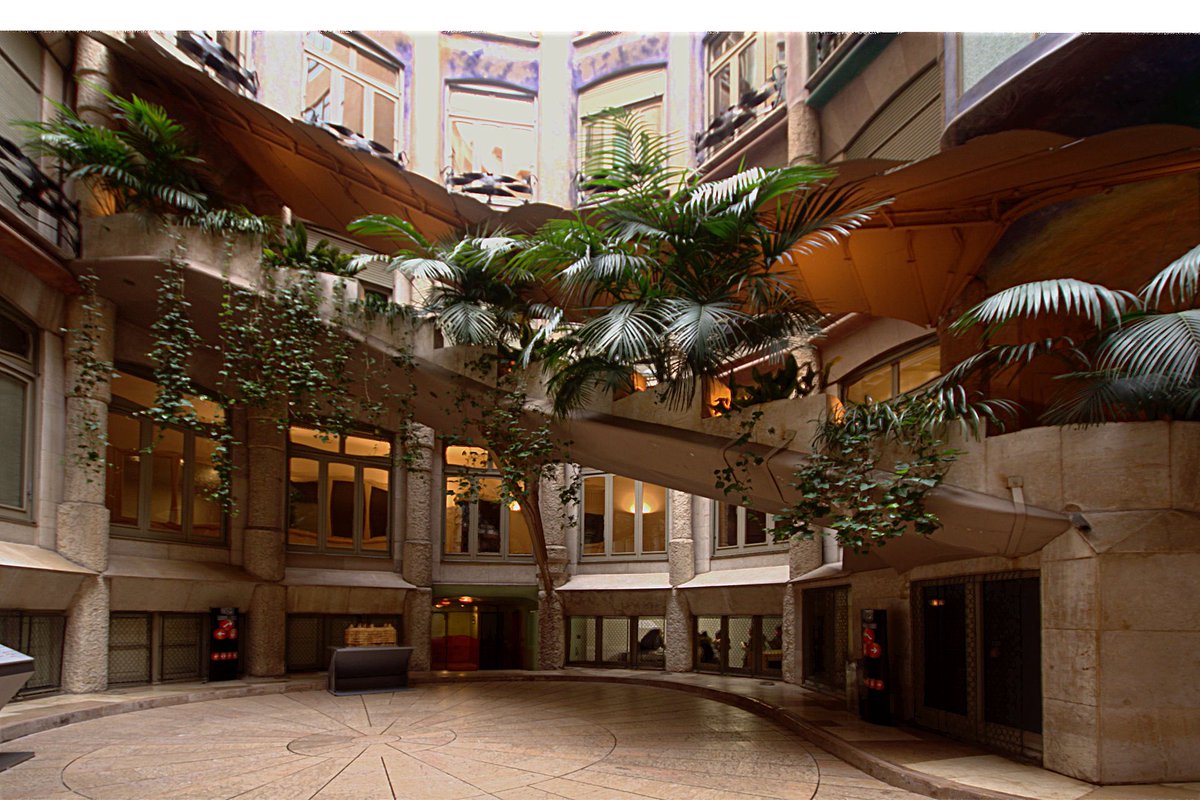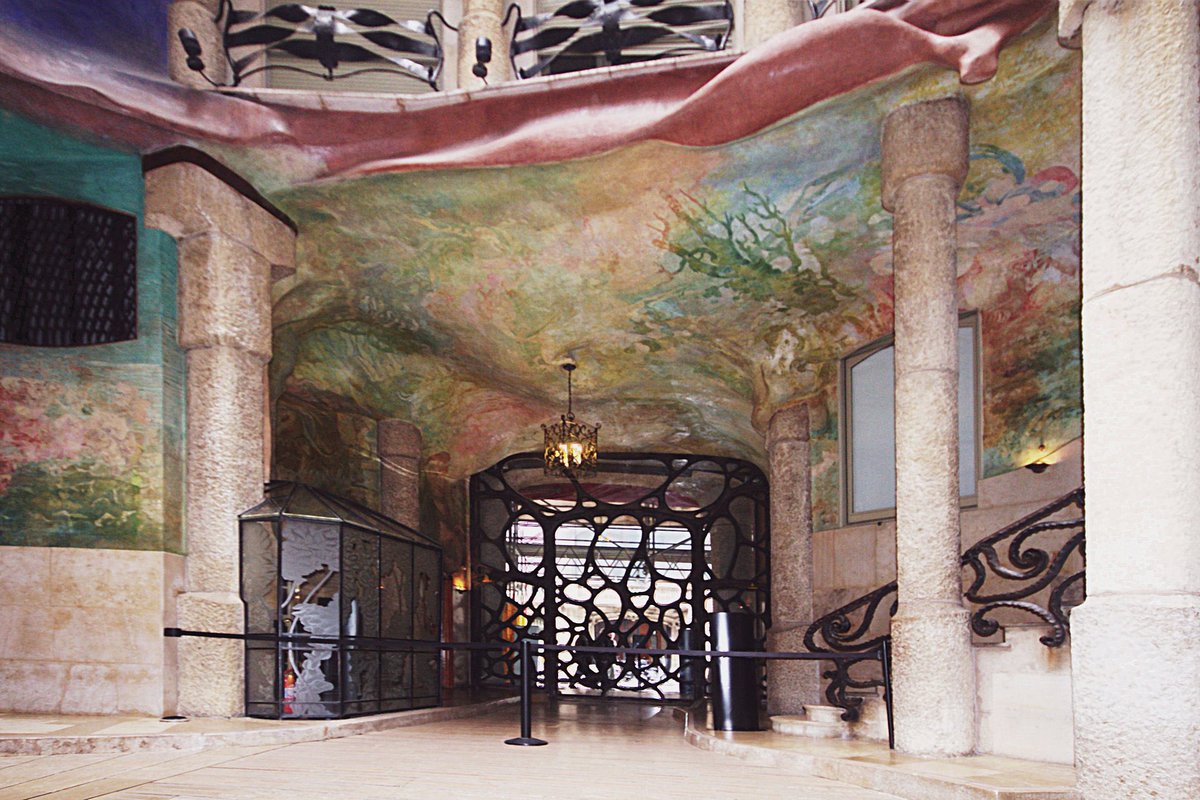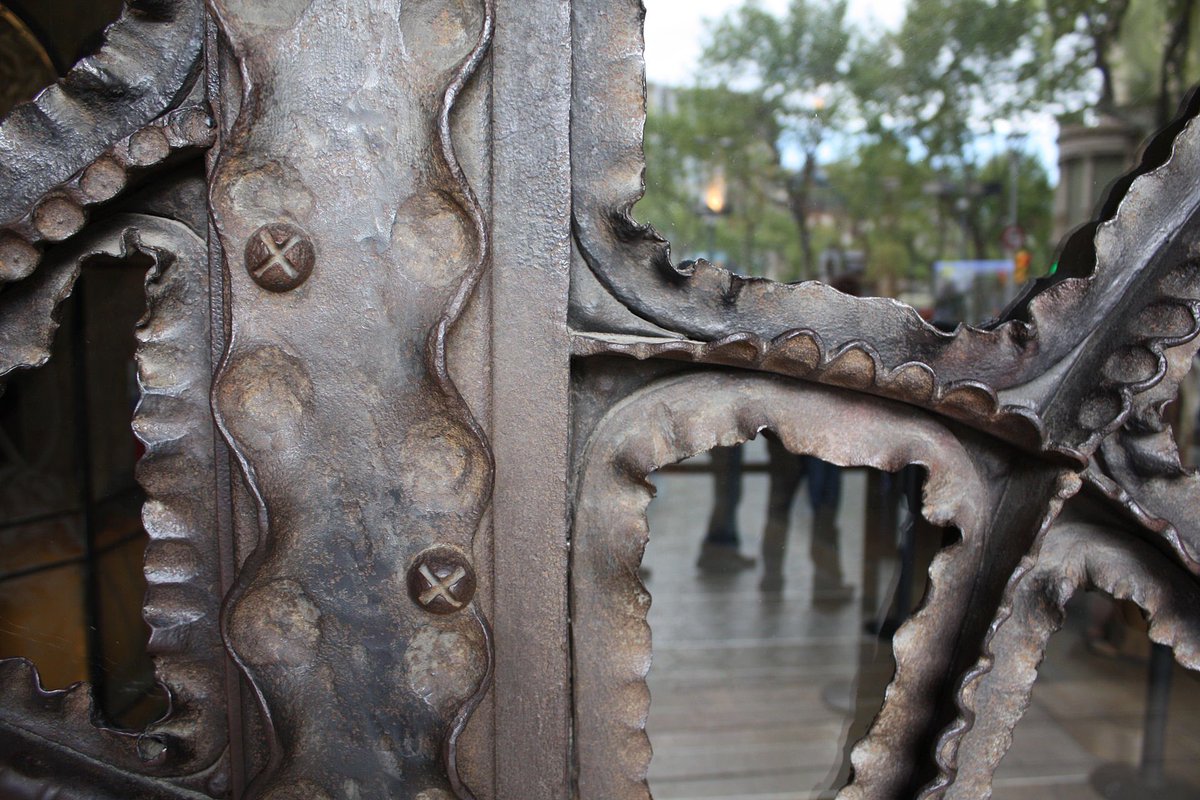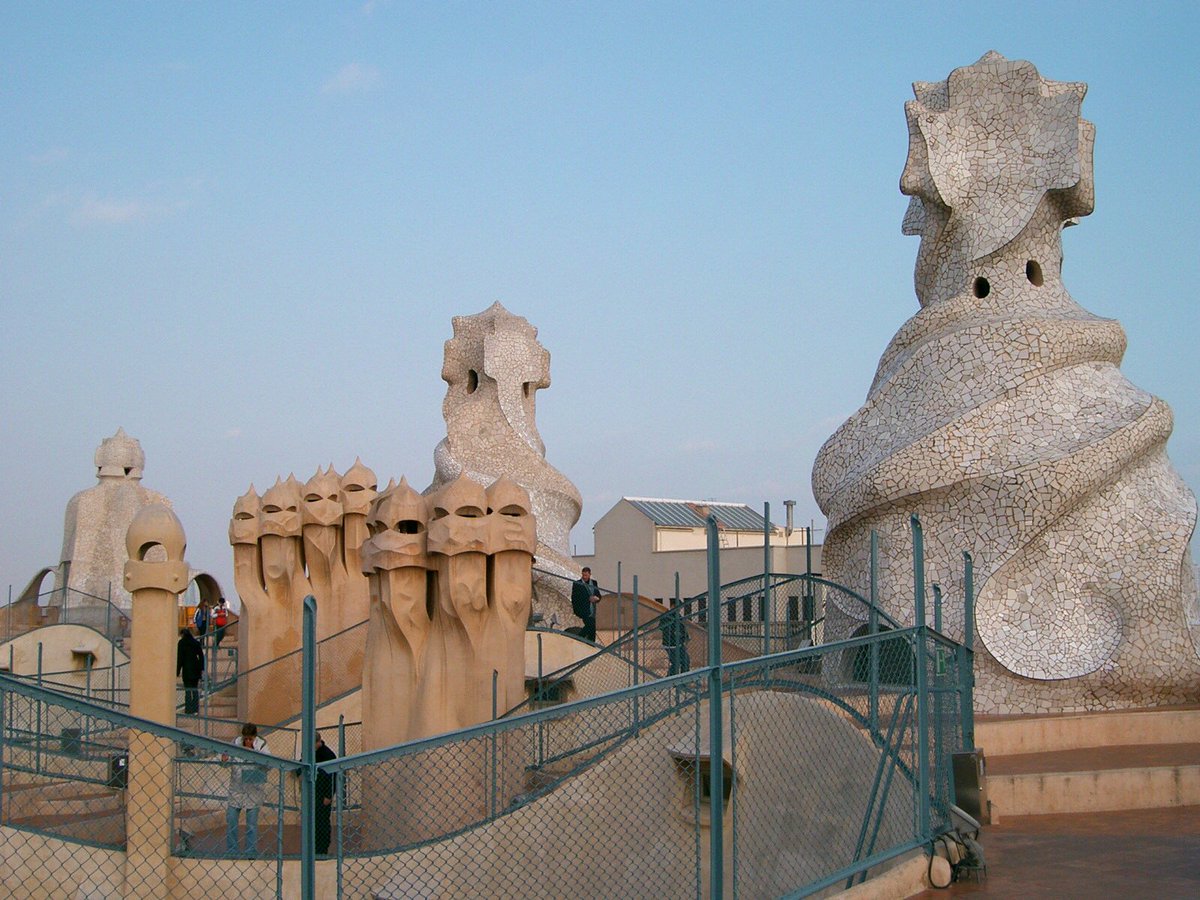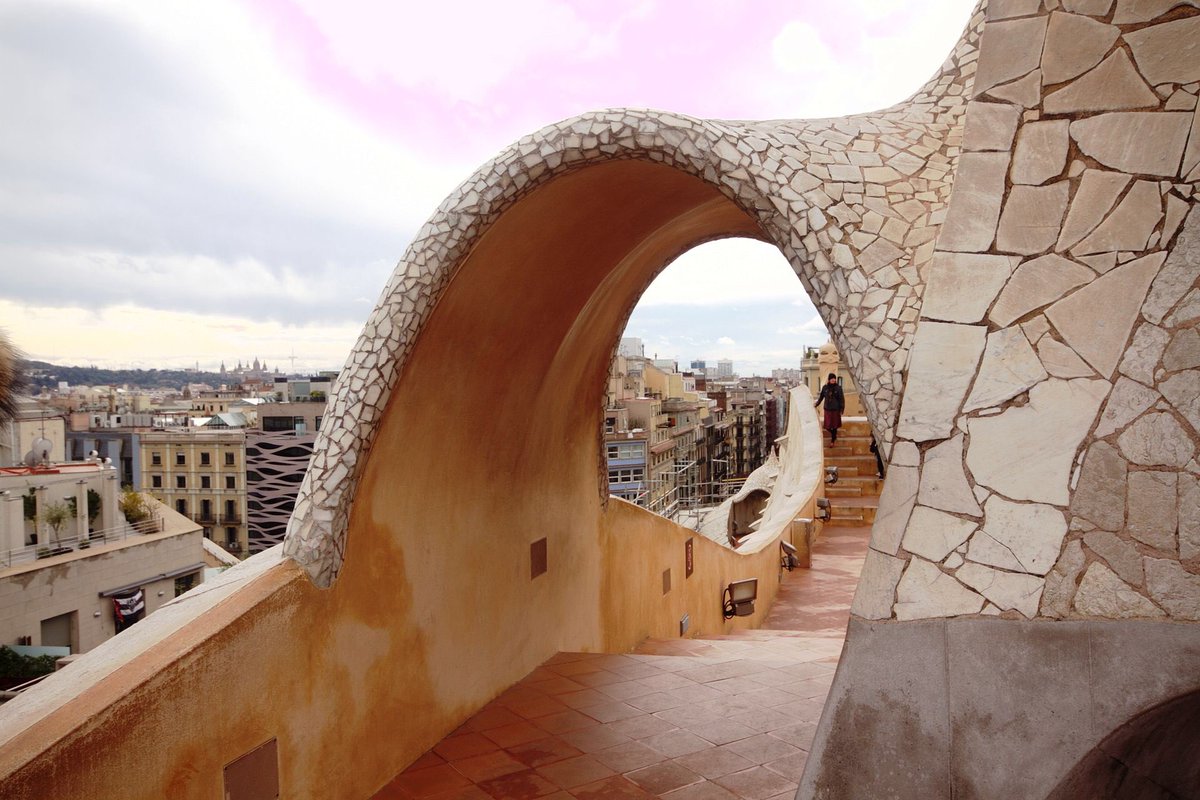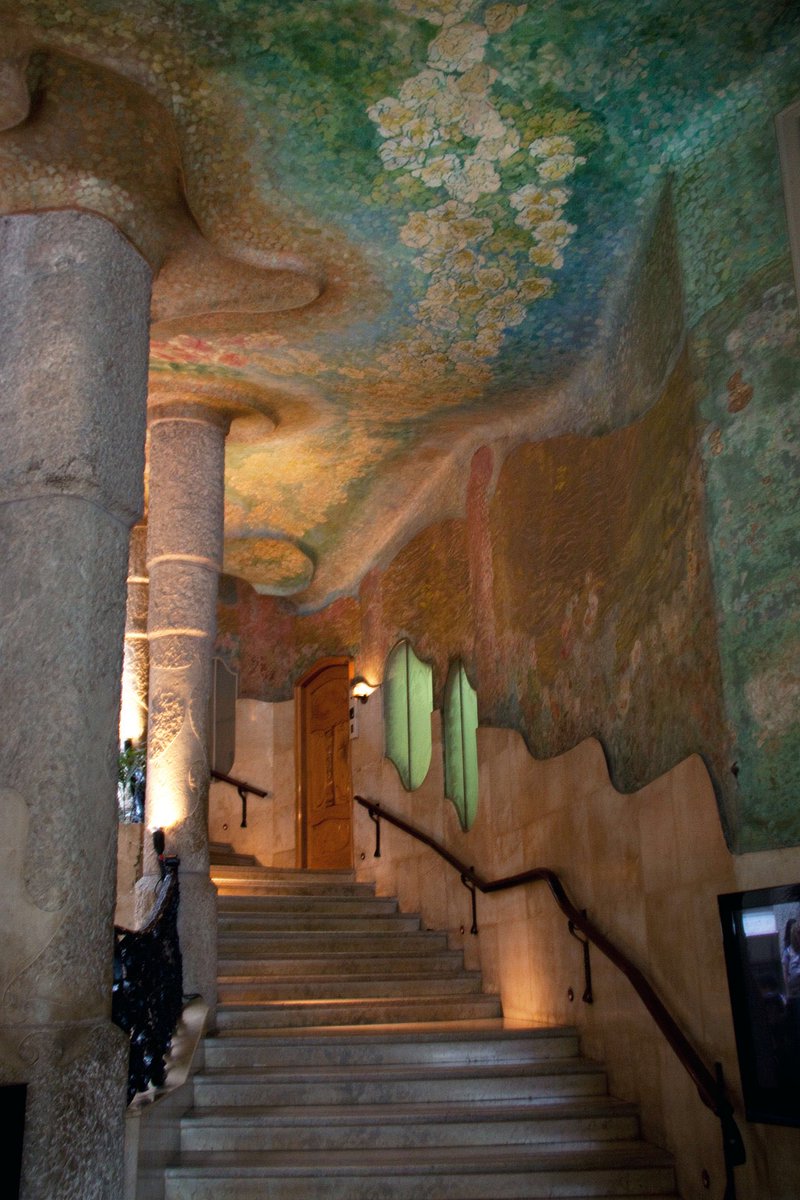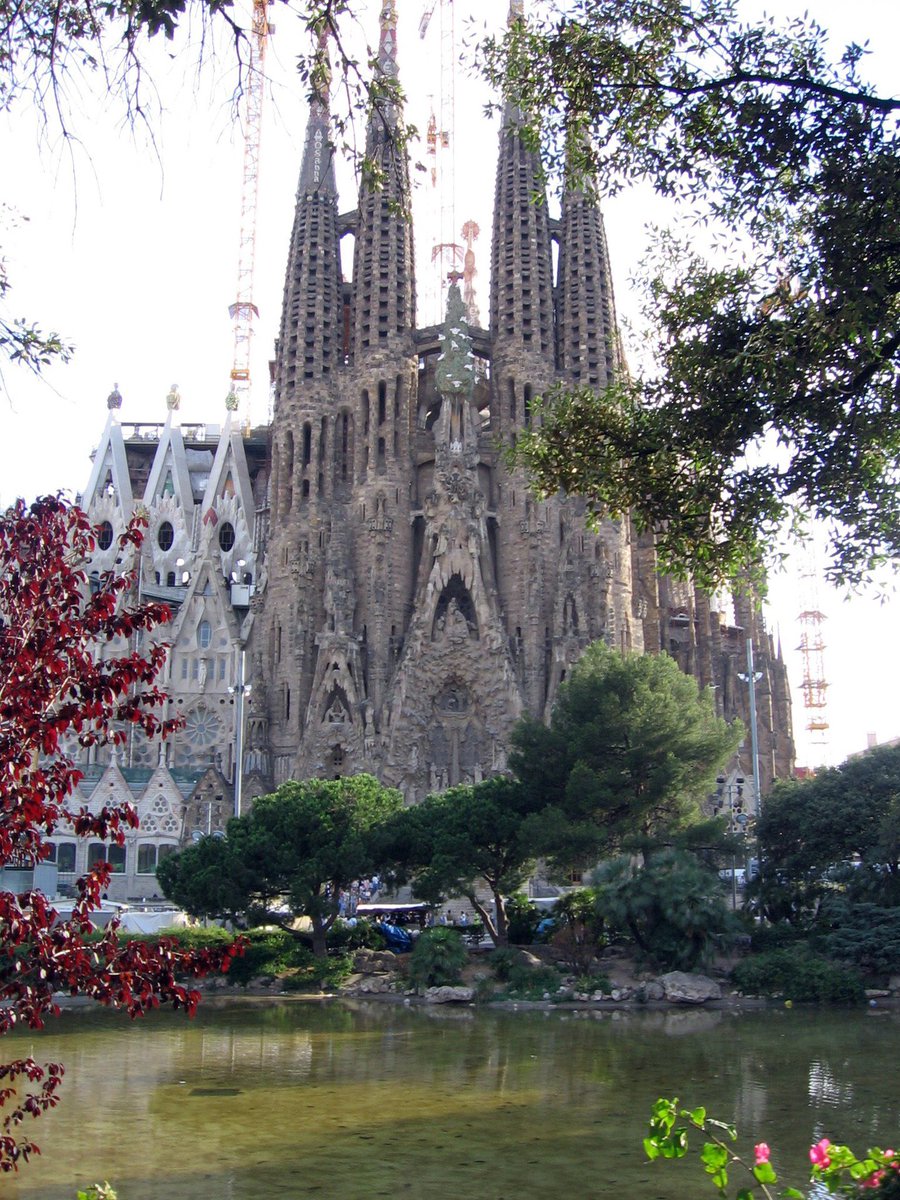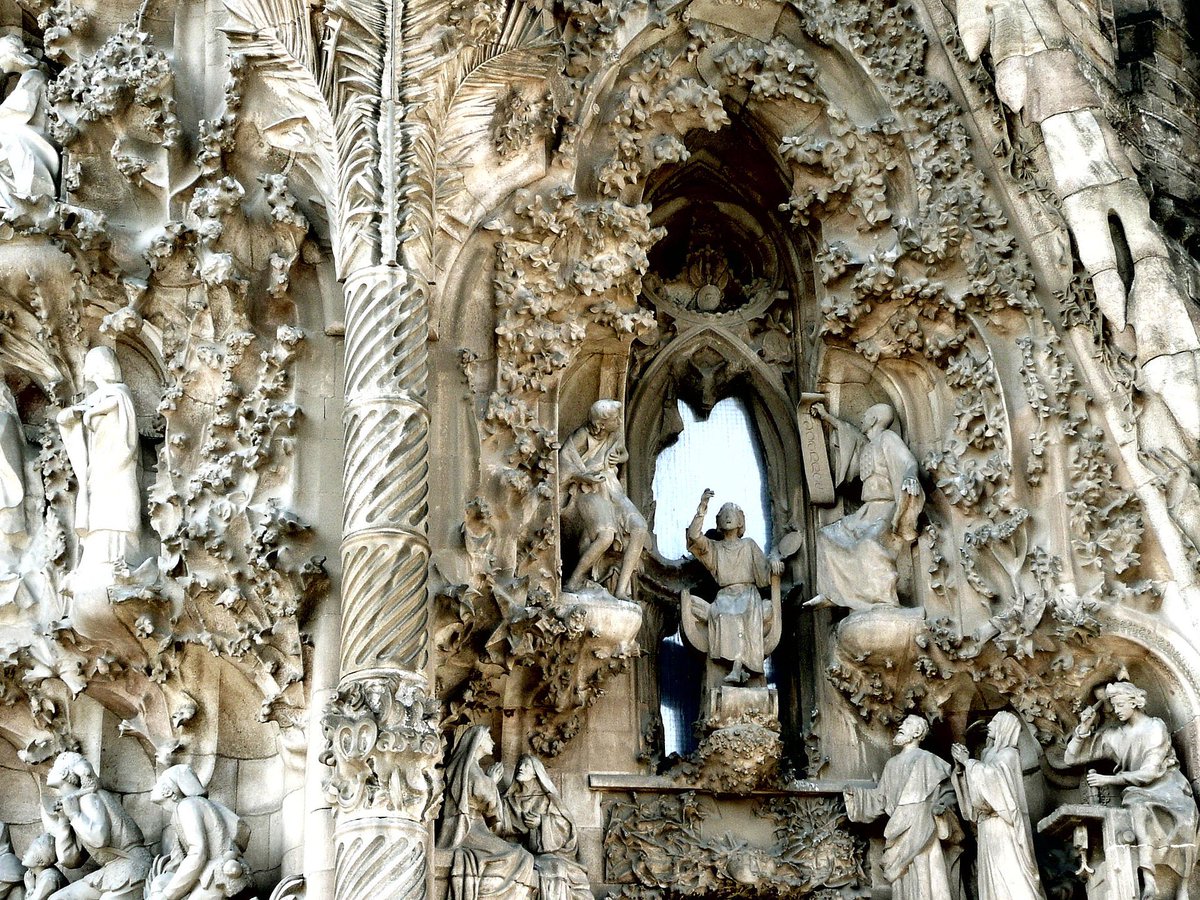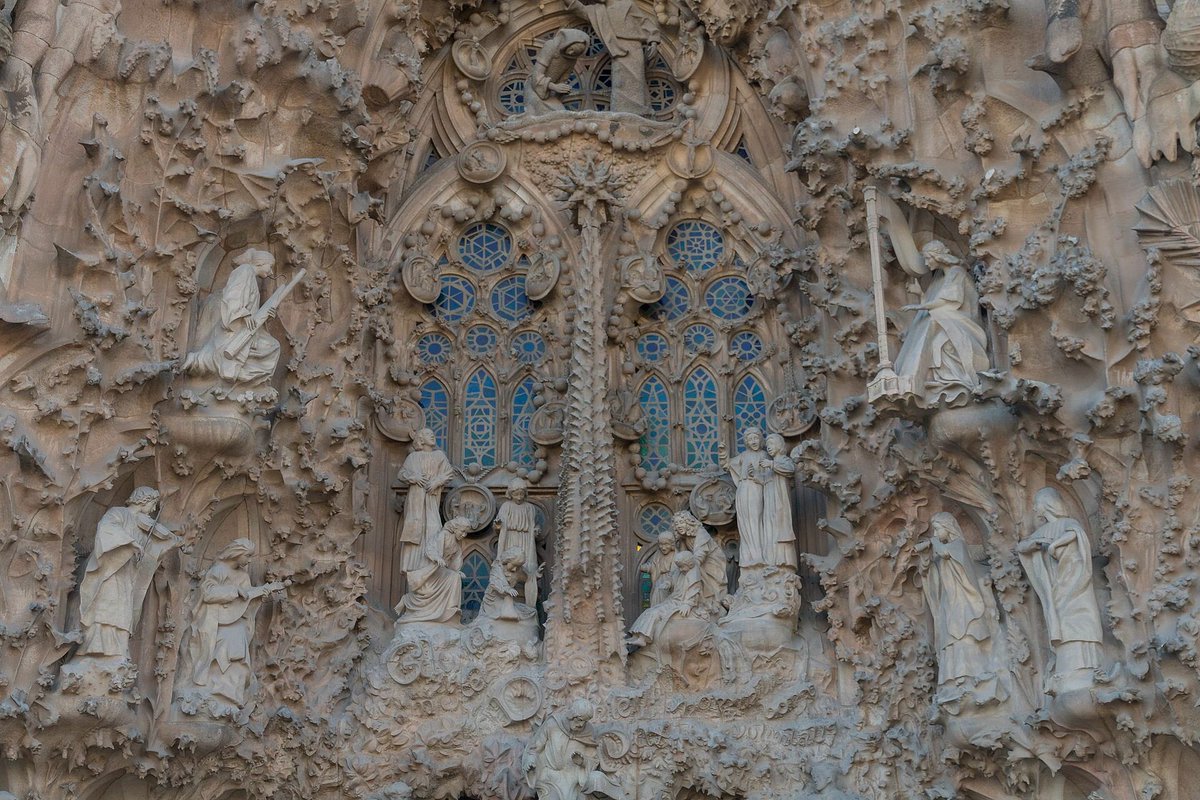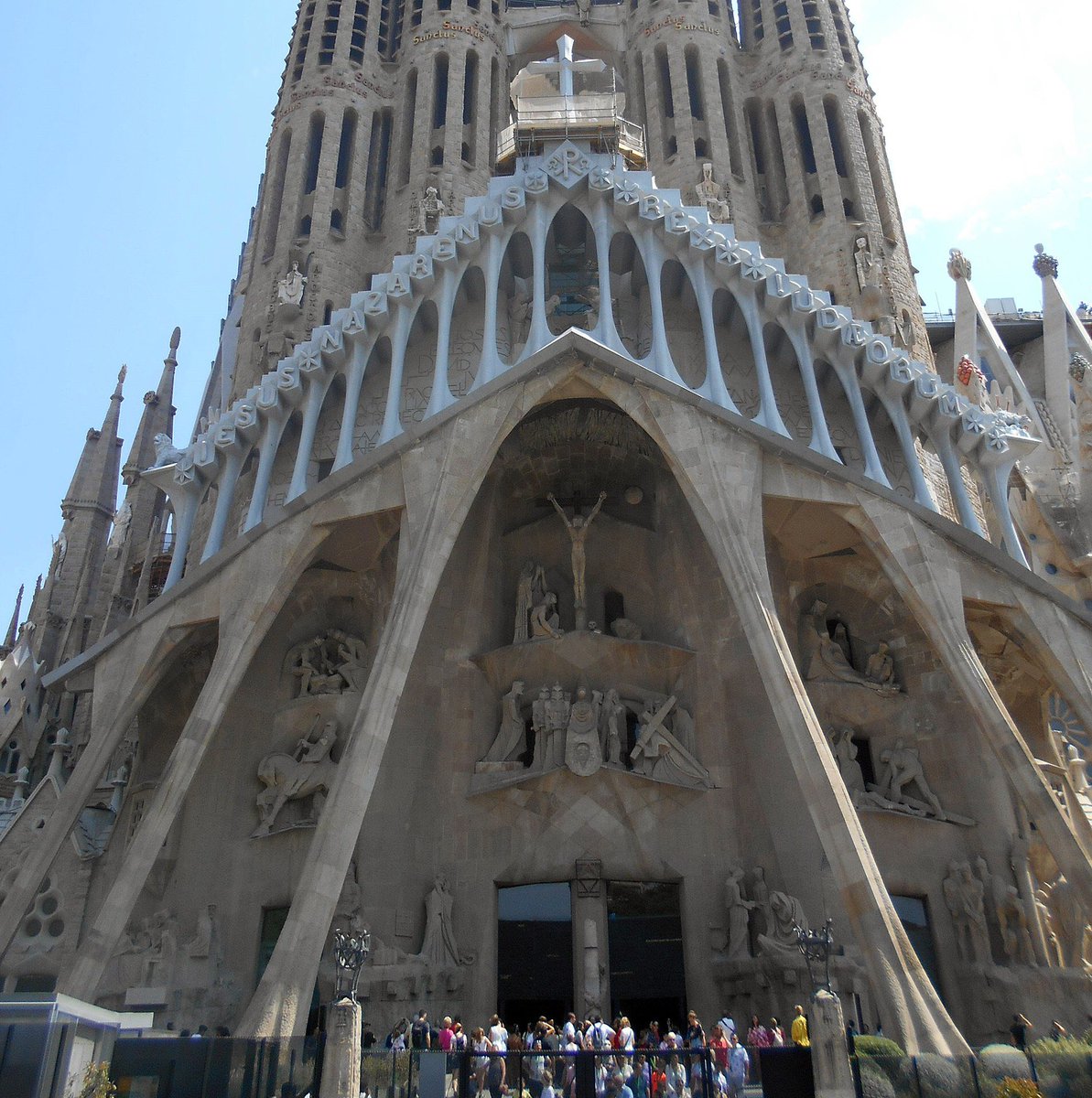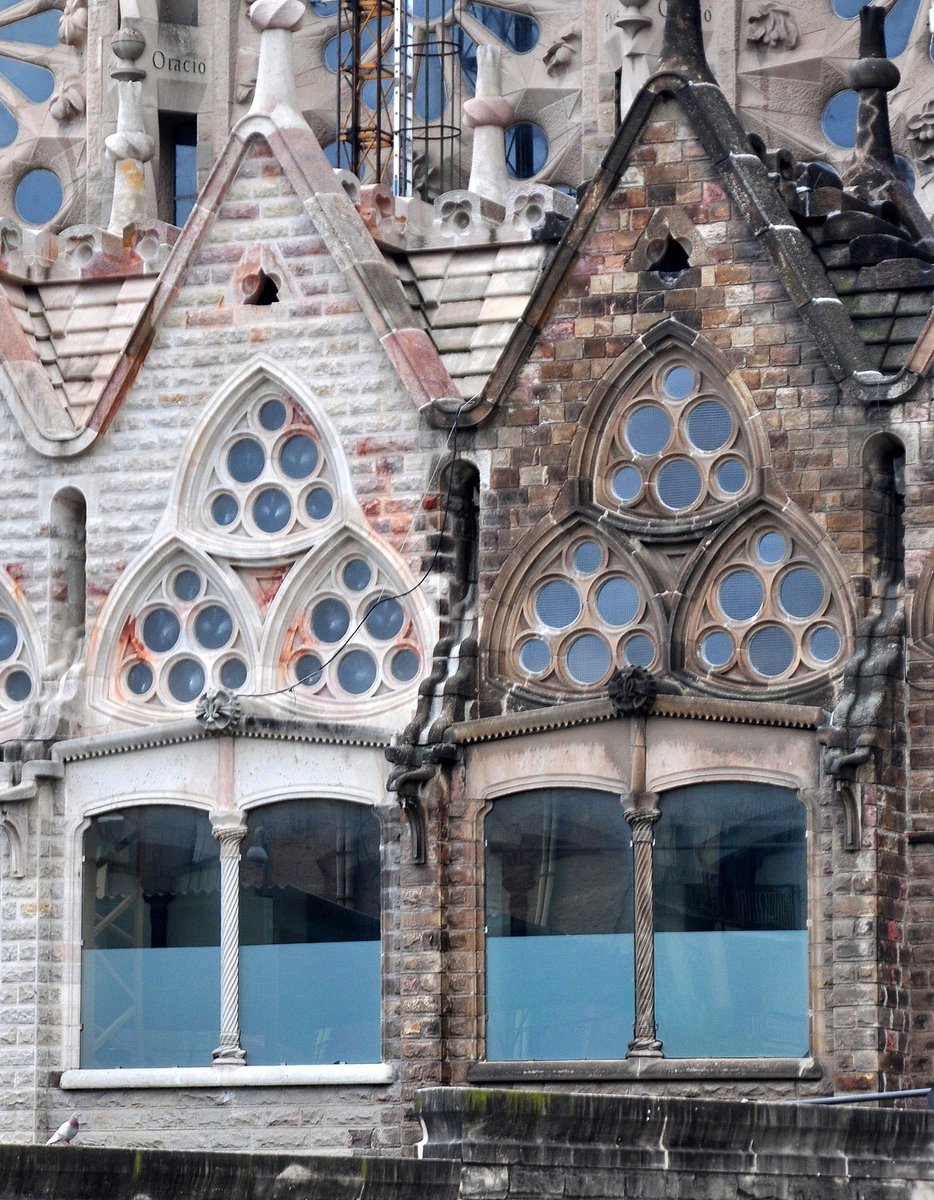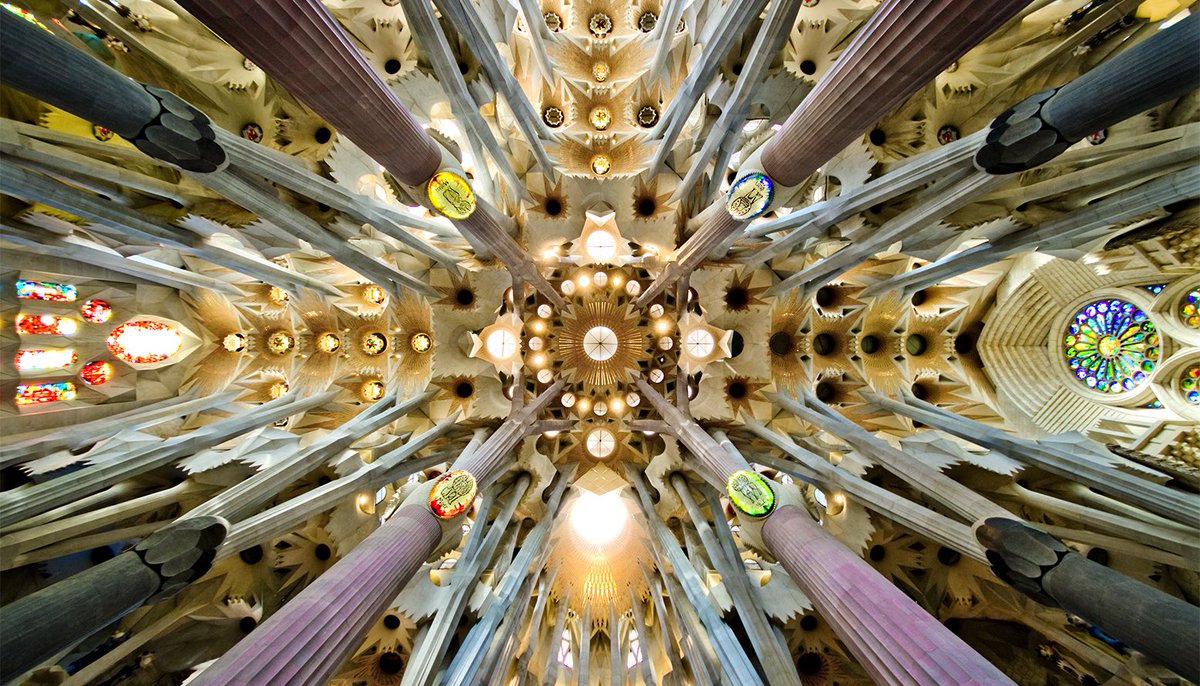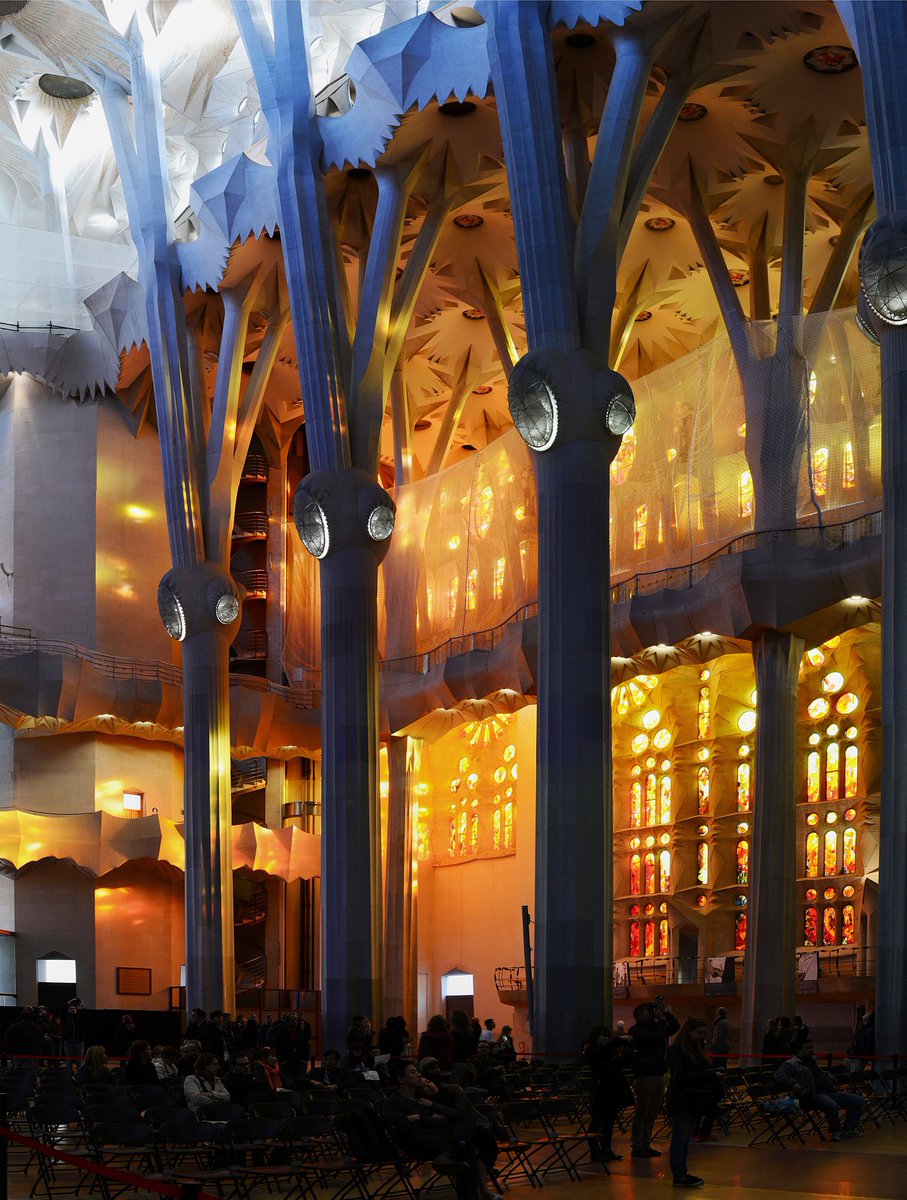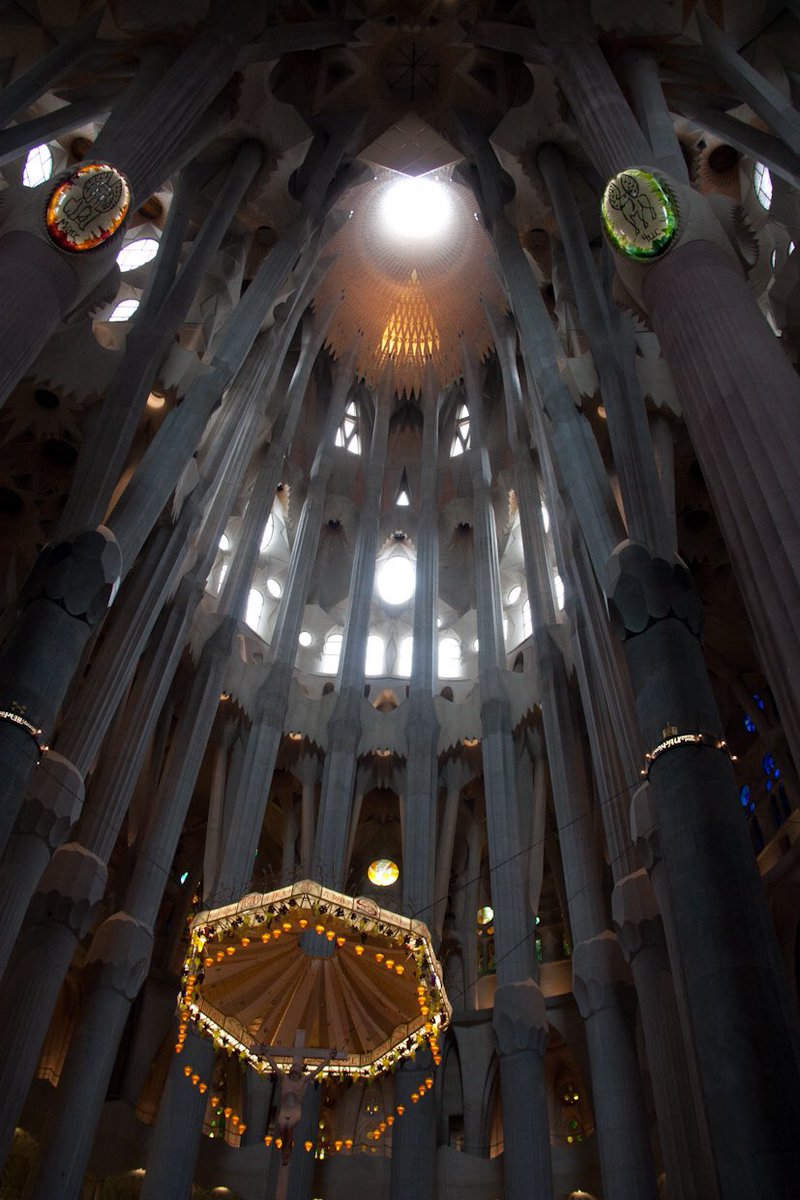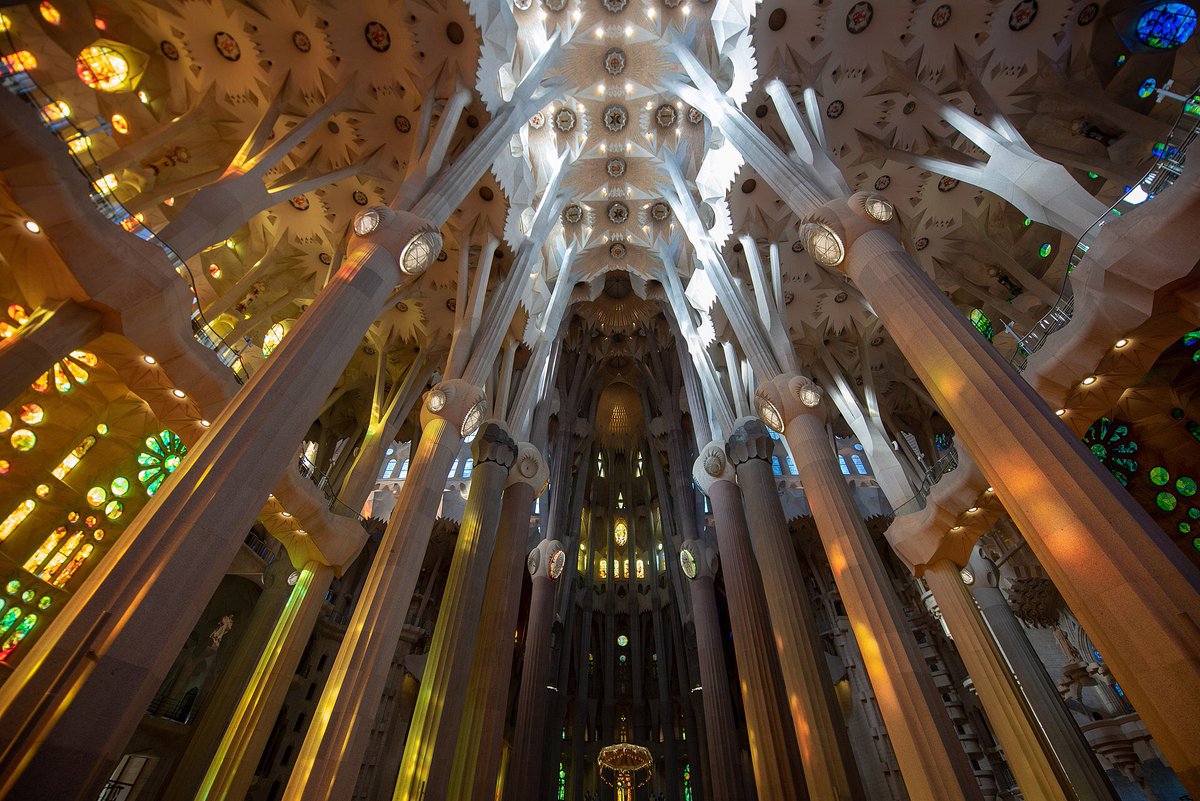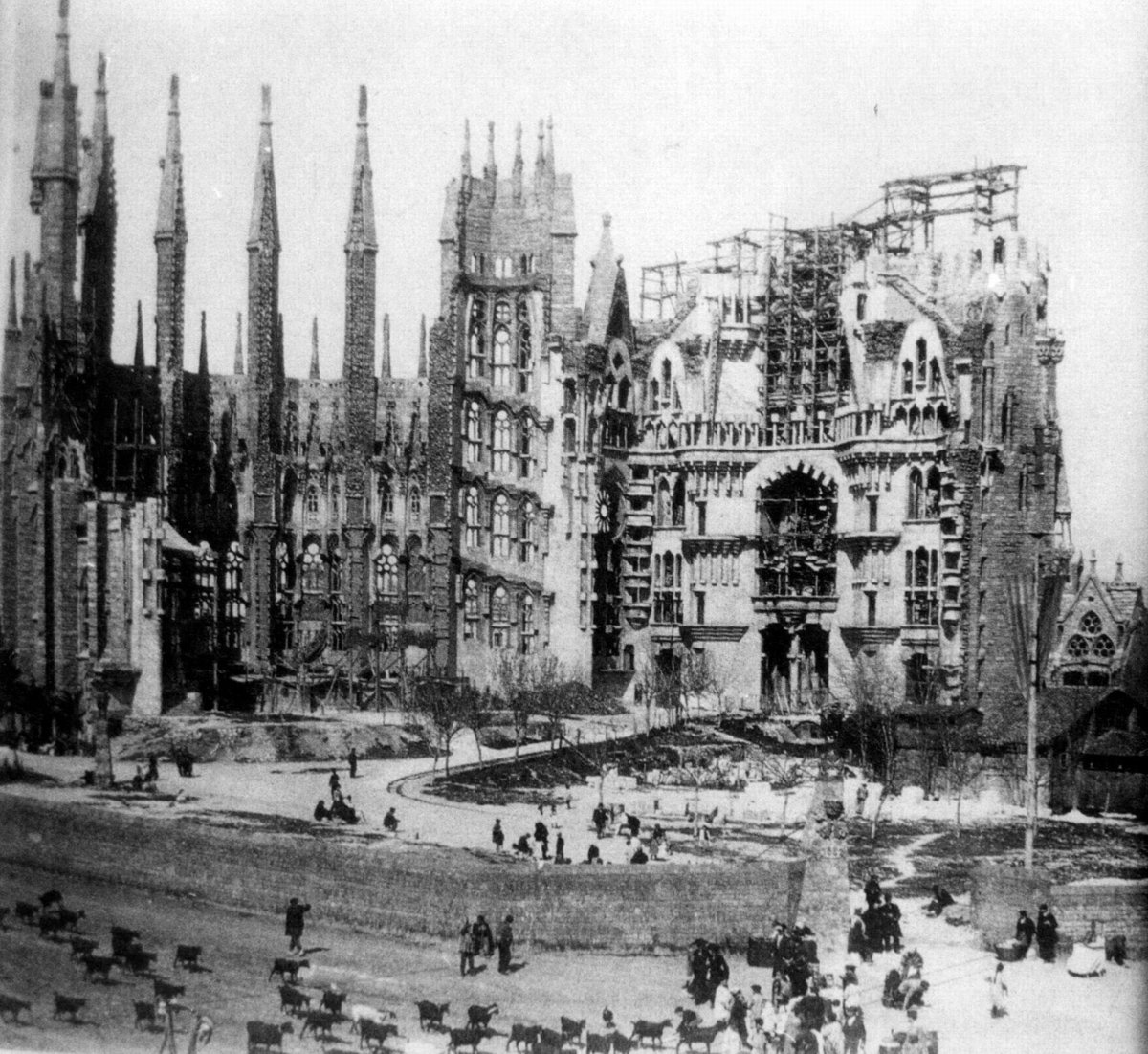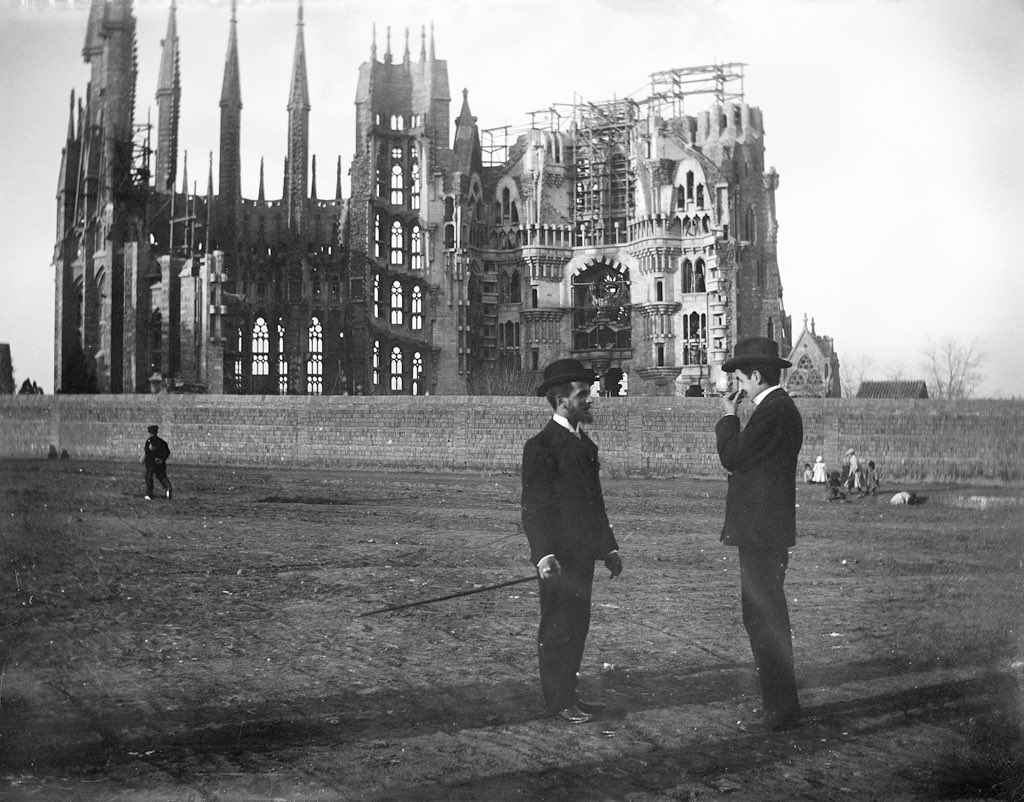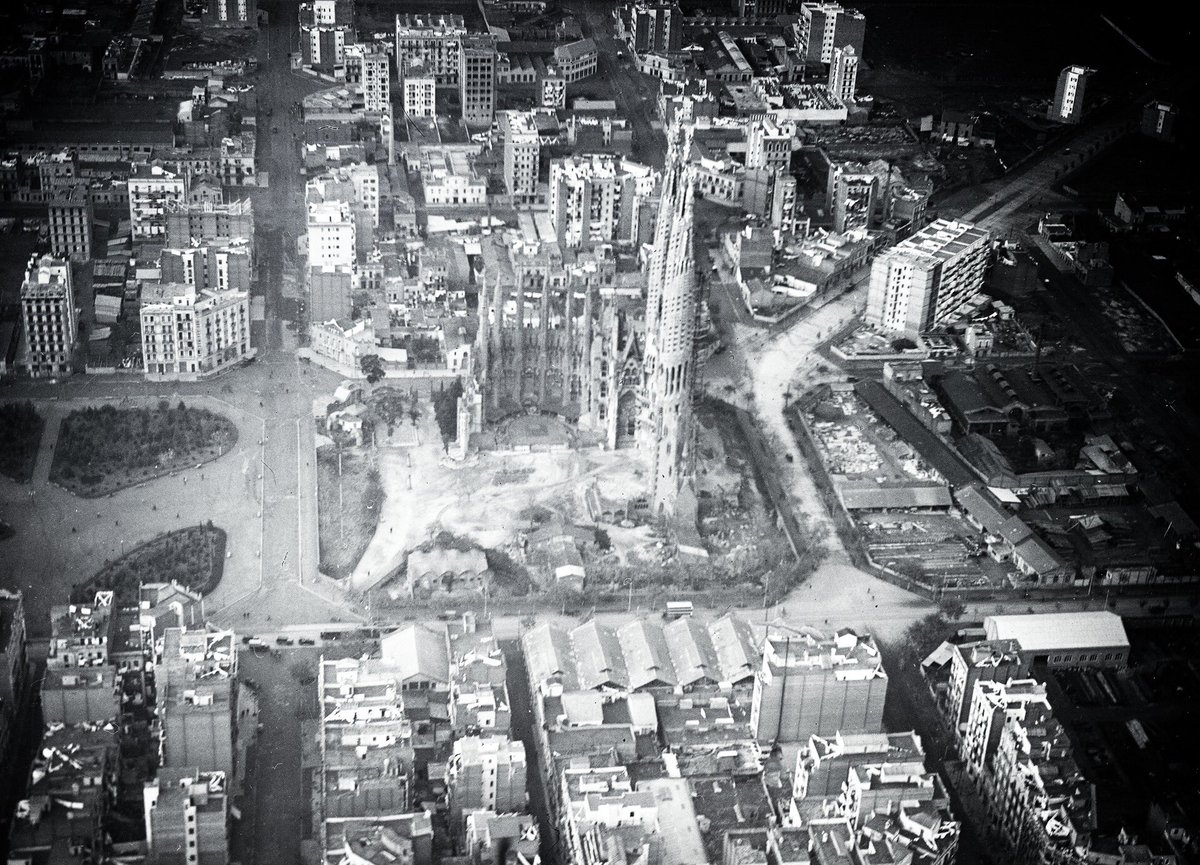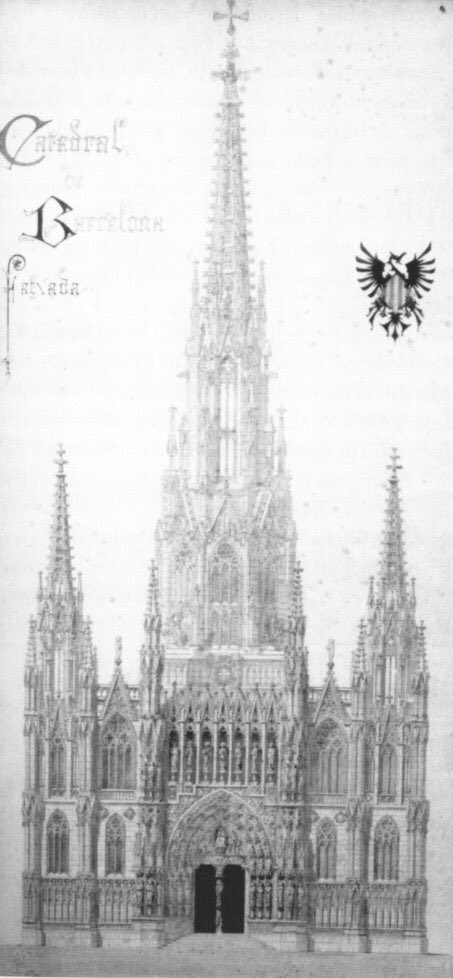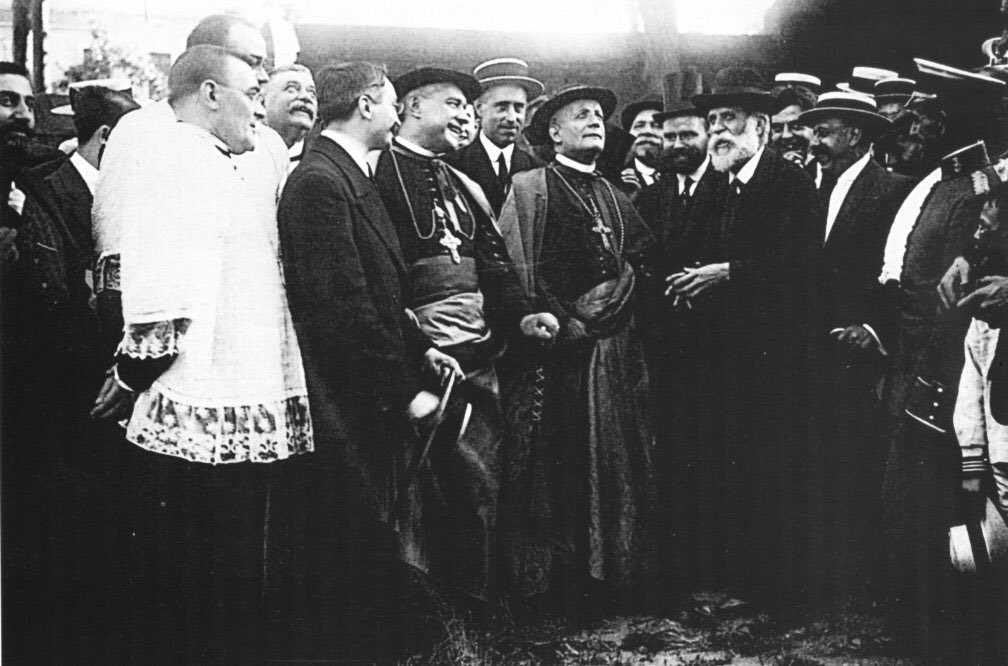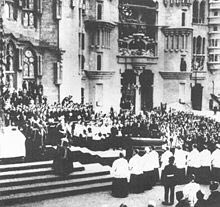"Nothing is art if it does not come from nature."
~ Antonio Gaudi 25 June 1852 – 10 June 1926
25 June 1852 – 10 June 1926  — the greatest exponent of Catalan Modernism. Gaudí's works have a highly individualized, one-of-a-kind style. Several of Gaudí's works have been granted World Heritage status.
— the greatest exponent of Catalan Modernism. Gaudí's works have a highly individualized, one-of-a-kind style. Several of Gaudí's works have been granted World Heritage status.
~ Antonio Gaudi
 25 June 1852 – 10 June 1926
25 June 1852 – 10 June 1926  — the greatest exponent of Catalan Modernism. Gaudí's works have a highly individualized, one-of-a-kind style. Several of Gaudí's works have been granted World Heritage status.
— the greatest exponent of Catalan Modernism. Gaudí's works have a highly individualized, one-of-a-kind style. Several of Gaudí's works have been granted World Heritage status.
Saint Philip Neri celebrating the Holy Mass by Joan Llimona (church of Sant Felip Neri, Barcelona). Gaudí was the model for Saint Philip Neri's face.
"We own the image. Fantasy comes from the ghosts. Fantasy is what people in the North own. We are concrete. The image comes from the Mediterranean. Orestes knows his way, where Hamlet is torn apart by his doubts."
~ Antoni Gaudí
~ Antoni Gaudí
Casa Vicens in Barcelona, designed by Antoni Gaudí, now a museum. It is located in the neighbourhood of Gràcia on Carrer de les Carolines, 20-26. It is considered one of the first buildings of Art Nouveau and was the first house designed by Gaudí.
Bodegas Güell, in Catalan Celler Güell, is an architectural complex comprising a winery and associated buildings located in Garraf, in the municipality of Sitges (Barcelona), designed by the Catalan architect Antoni Gaudí.
The Palau Güell is a mansion designed by Gaudí for the industrial tycoon Eusebi Güell and built between 1886 and 1888. It is situated in the El Raval neighbourhood of the city of Barcelona. It is part of the UNESCO World Heritage Site "Works of Antoni Gaudí".
The Park Güell is a public park system composed of gardens and architectural elements located on Carmel Hill, in Barcelona, Catalonia, Spain. Carmel Hill belongs to the mountain range of Collserola – the Parc del Carmel is located on the northern face.
Park Güell is located in La Salut, a neighborhood in the Gràcia district of Barcelona. With urbanization in mind, Eusebi Güell assigned the design of the park to Antoni Gaudí, the face of Catalan modernism.
The park was built from 1900 to 1914 and was officially opened as a public park in 1926. In 1984, UNESCO declared the park a World Heritage Site under "Works of Antoni Gaudí".
"Artists do not need monuments erected for them because their works are their monuments."
~ Antonio Gaudi
~ Antonio Gaudi
In 1883 Gaudí was put in charge of the recently initiated project to build a Barcelona church called Basílica i Temple Expiatori de la Sagrada Família. Gaudí completely changed the initial design and imbued it with his own distinctive style.
The Episcopal Palace of Astorga is a building by Spanish Catalan architect Antoni Gaudí. It was built between 1889 and 1913. Designed in the Catalan Modernisme style, it is one of only three buildings by Gaudí outside Catalonia.
The Casa Botines (built 1891-1892) is a Modernist building in León, Spain designed by Antoni Gaudí. It was adapted to serve as the headquarters of Caja España, a local savings bank.
In 1900, Gaudi received an award for the best building of the year from the Barcelona City Council for his Casa Calvet.
Casa Batlló in the center of Barcelona, was designed by Antoni Gaudí, and is considered one of his masterpieces. A remodel of a previously built house, it was redesigned in 1904 by Gaudí and has been refurbished several times after that.
"There are no straight lines or sharp corners in nature. Therefore, buildings must have no straight lines or sharp corners."
~ Antonio Gaudi
~ Antonio Gaudi
Casa Milà popularly known as La Pedrera or "The stone quarry", a reference to its unconventional rough-hewn appearance, is a modernist building in Barcelona. It was the last private residence designed by architect Antoni Gaudí and was built between 1906 and 1912.
In 1984, it was declared a World Heritage Site by UNESCO. Since 2013 it has been the headquarters of the Fundació Catalunya La Pedrera which manages the visit to the building, exhibitions and other cultural and educative activities at Casa Milà.
“Gothic art is imperfect... it is a style created by the compasses, a formulaic industrial repetition...The proof that Gothic works are of deficient plasticity is that they produce their greatest emotional effect when they are mutilated, covered in ivy and lit by the moon.” Gaudí
“Light achieves maximum harmony at an inclination of 45°, since it resides on objects in a way that is neither horizontal nor vertical... it offers the most perfect vision of objects and their most exquisite nuances. It is the Mediterranean light.” Gaudí
During the last years of his career, dedicated almost exclusively to the Sagrada Família, Gaudí reached the culmination of this naturalistic style, creating a synthesis of all of the solutions and styles he had tried until then.
Gaudí achieved perfect harmony between structural and ornamental elements, between plastic and aesthetic, between function and form, between container and content, achieving the integration of all arts in one structured, logical work.
The Basílica de la Sagrada Família is a large unfinished Roman Catholic minor basilica in Barcelona. Antoni Gaudí’s work on the building is part of a UNESCO World Heritage Site. On 7 November 2010, Pope Benedict XVI consecrated the church and proclaimed it a minor basilica.
"The expiatory church of La Sagrada Família is made by the people and is mirrored in them. It is a work that is in the hands of God and the will of the people."
~ Antonio Gaudi
~ Antonio Gaudi
"There is no reason to regret that I cannot finish the church. I will grow old but others will come after me. What must always be conserved is the spirit of the work,but its life has to depend on the generations it is handed down to and with whom it lives and is incarnated" Gaudi
"Originality consists of returning to the origin. Thus, originality means returning, through one's resources, to the simplicity of the early solutions."
~ Antonio Gaudi
~ Antonio Gaudi
Gaudí shows the Sagrada Família to the Papal nuncio, Cardinal Francesco Ragonesi (1915). On that occasion, Monsegnor Ragonesi considered Gaudí "The Dante of architecture".
The older Gaudí ate frugally, dressed in old, worn-out suits, and neglected his appearance to the extent that sometimes he was taken for a beggar, such as after the accident that caused his death.
On 7 June 1926, Gaudí was taking his daily walk to the Sant Felip Neri church for his habitual prayer and confession. While walking along the Gran Via de les Corts Catalanes between Girona and Bailén streets, he was struck by a passing number 30 tram and lost consciousness.
Assumed to be a beggar because of his lack of identity documents and shabby clothing, the unconscious Gaudí did not receive immediate aid. Eventually some passers-by transported him in a taxi to the Santa Creu Hospital, where he received rudimentary care.

 Read on Twitter
Read on Twitter